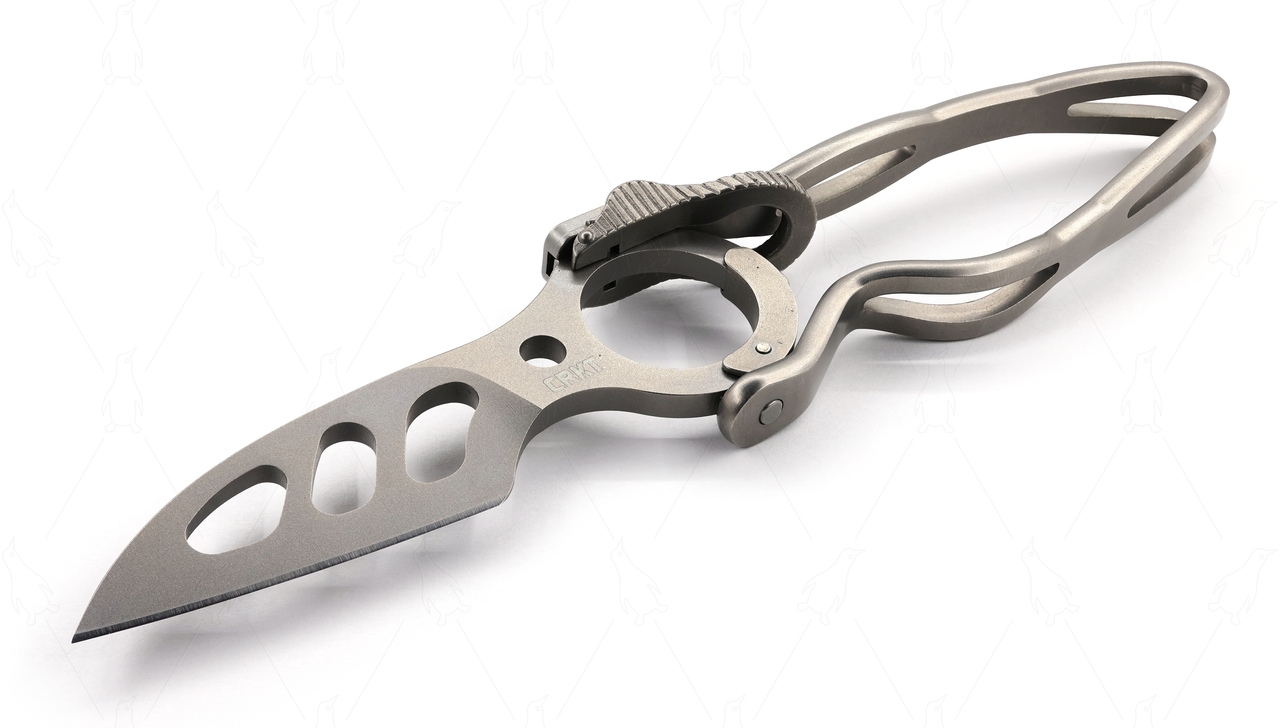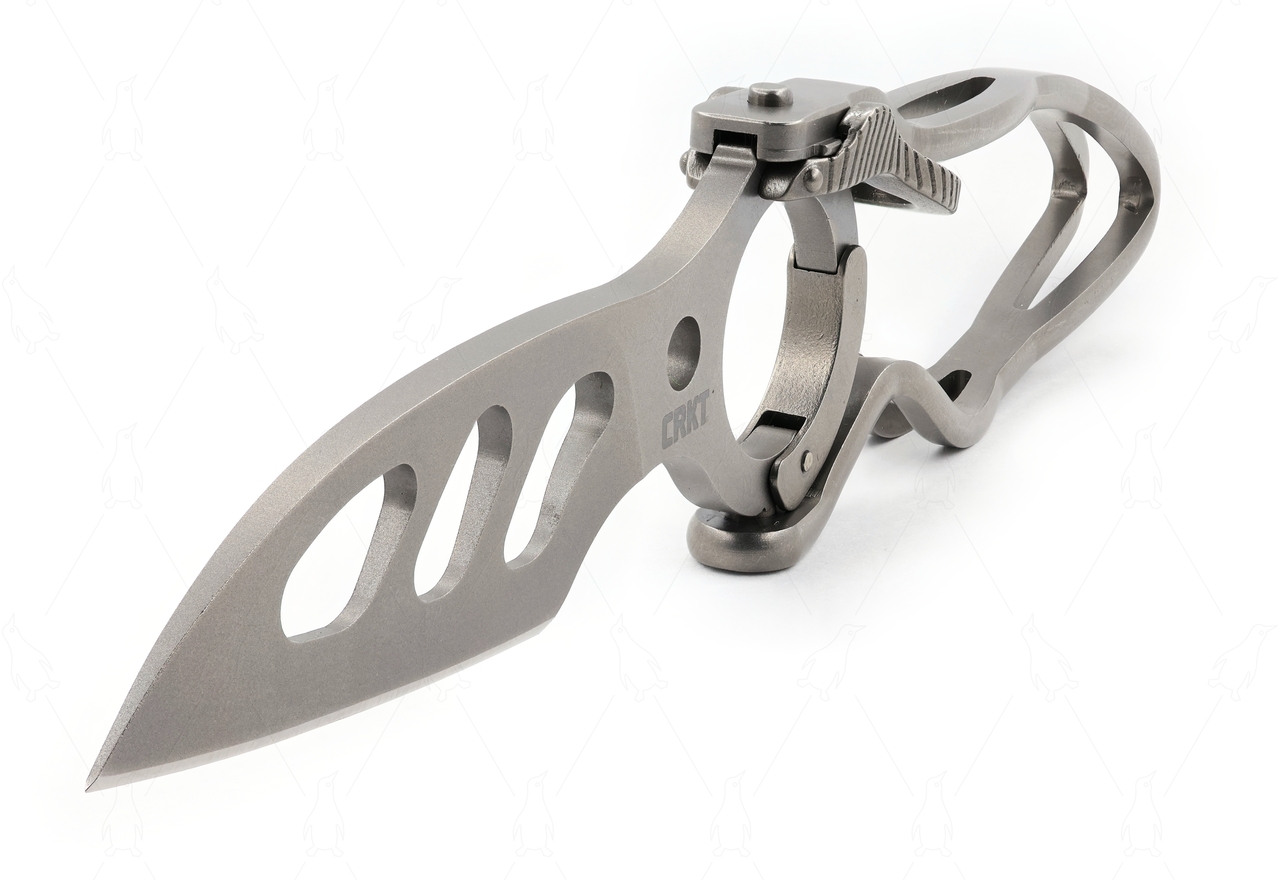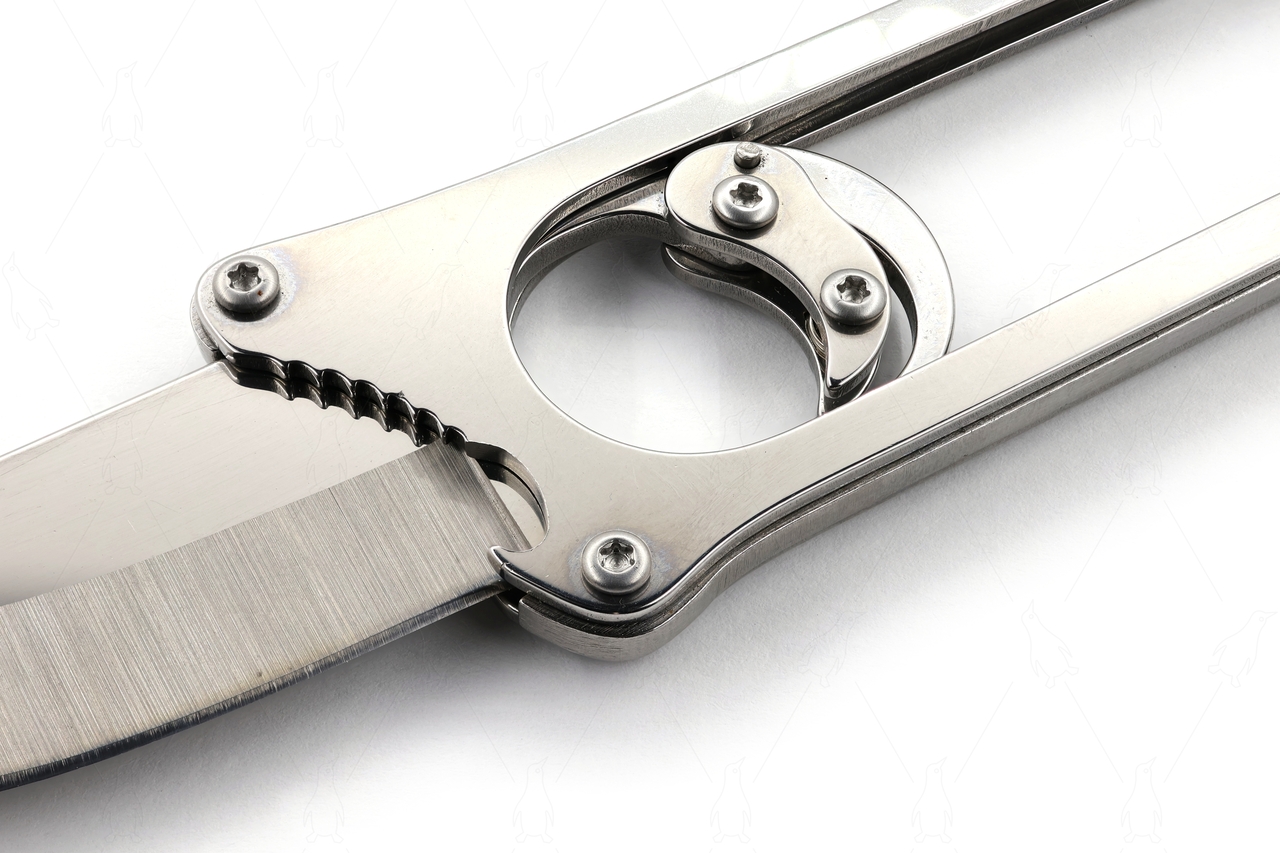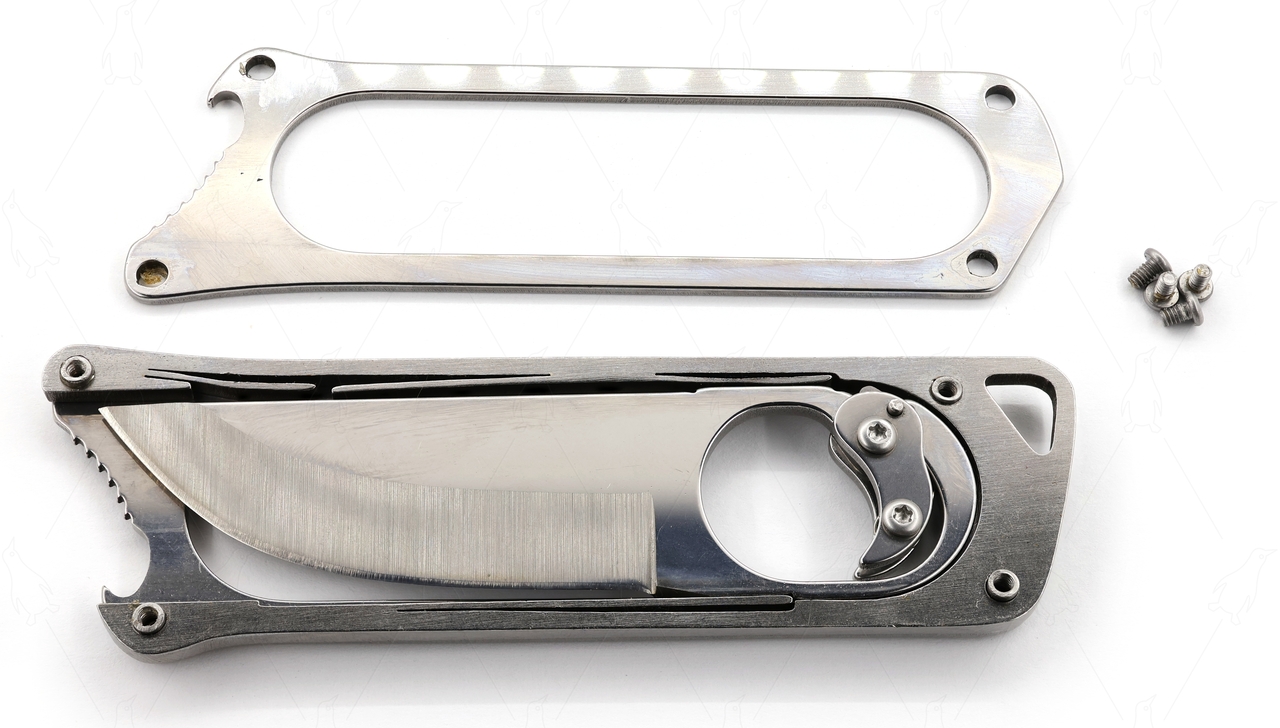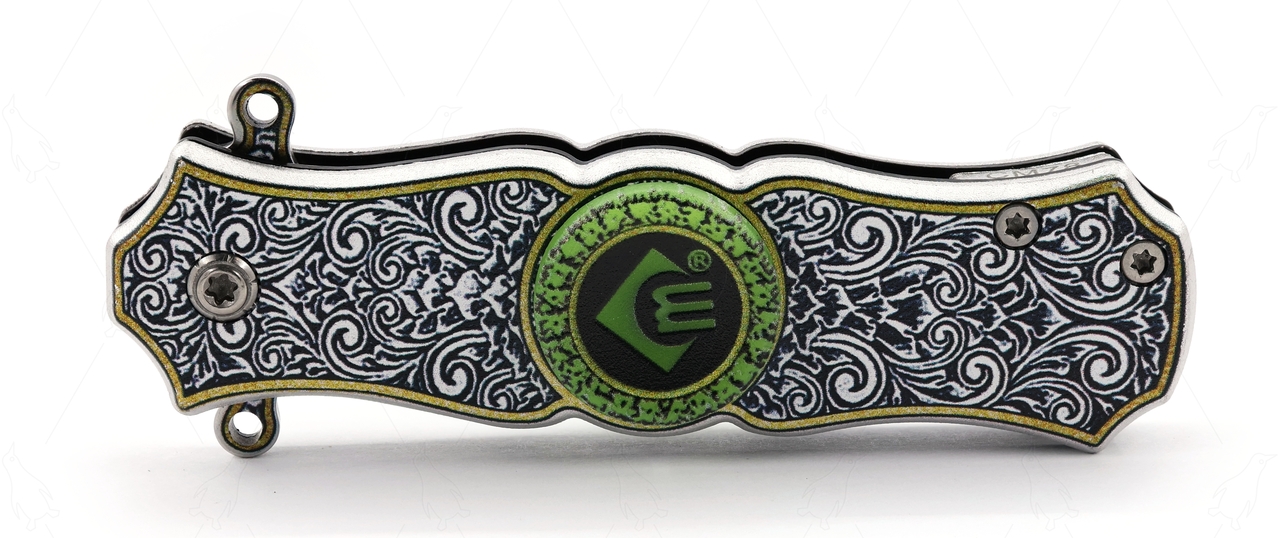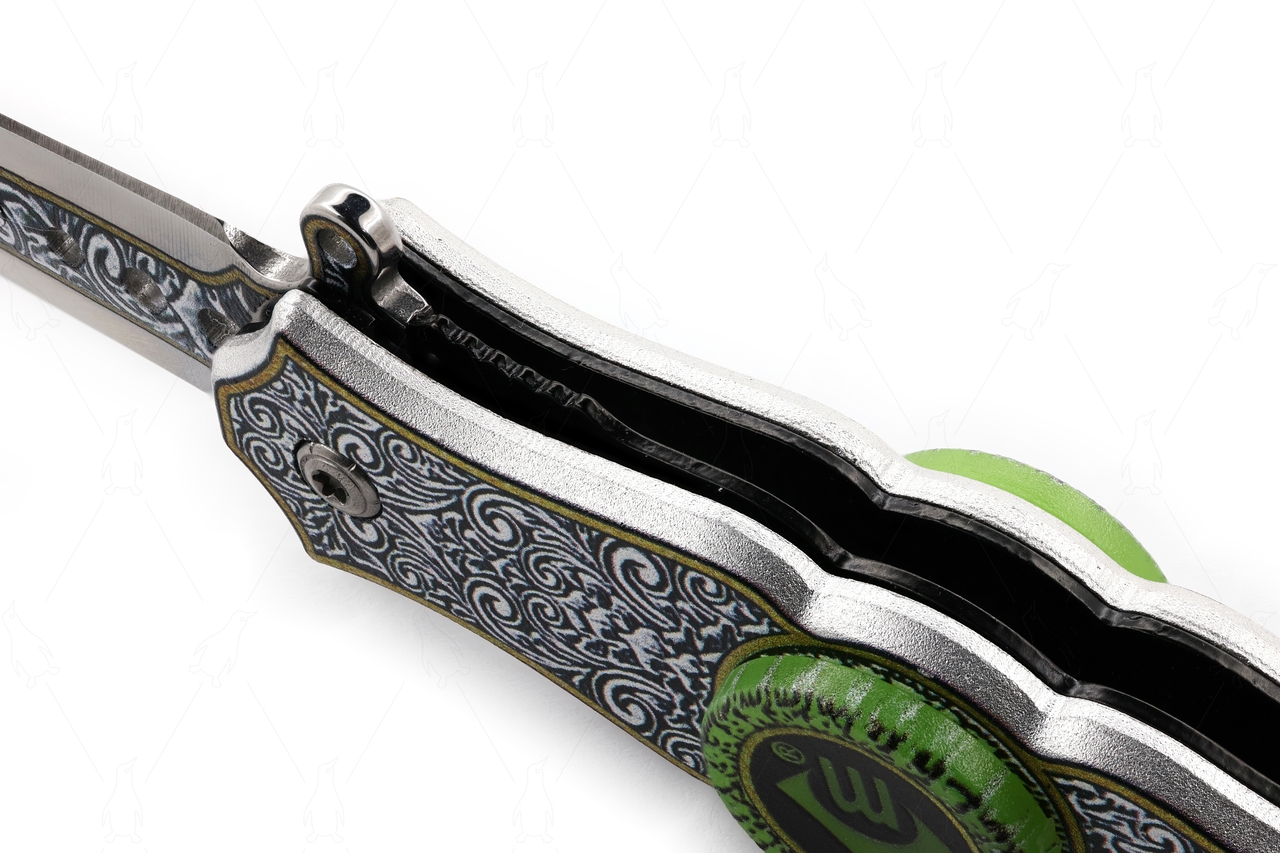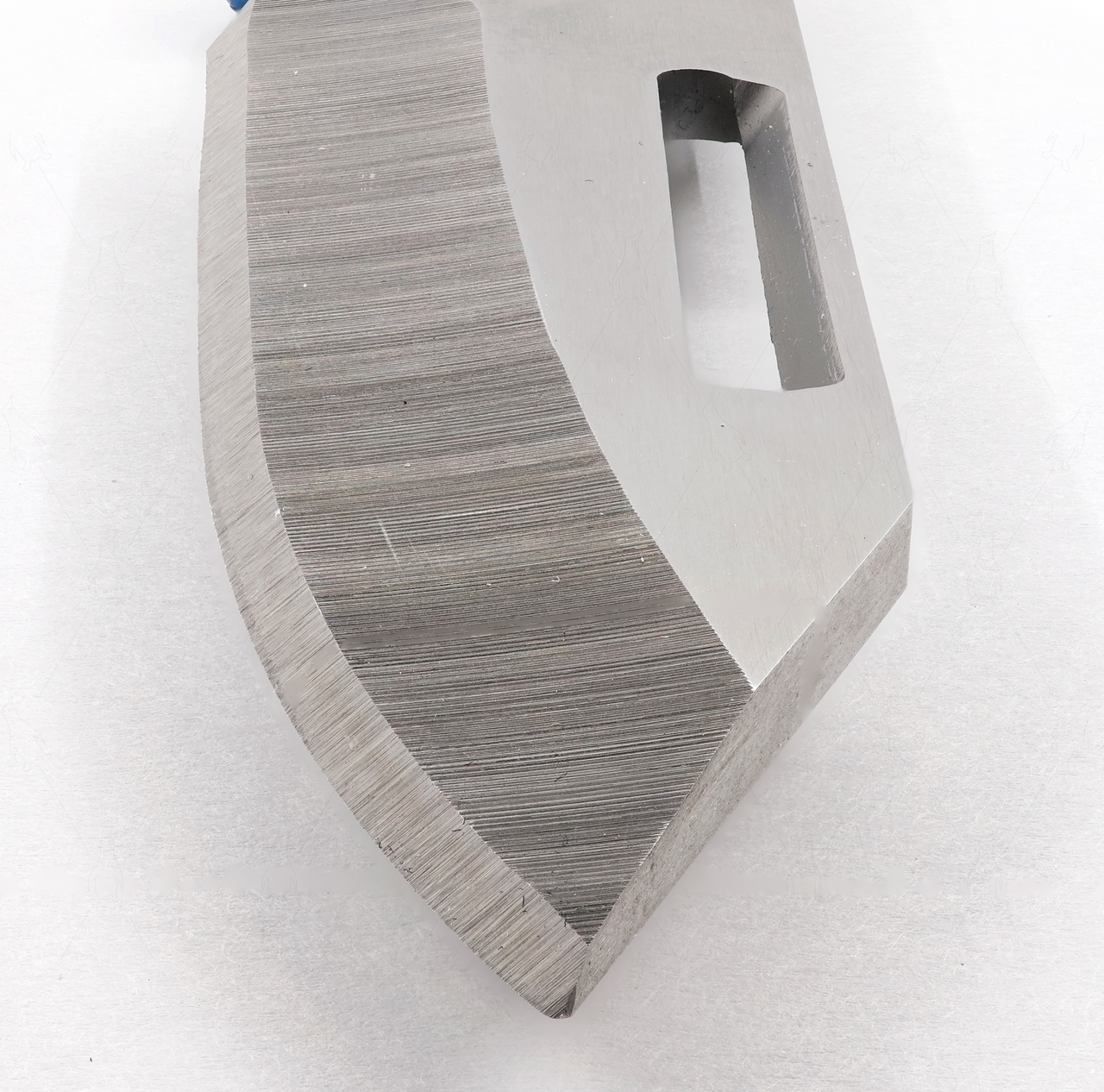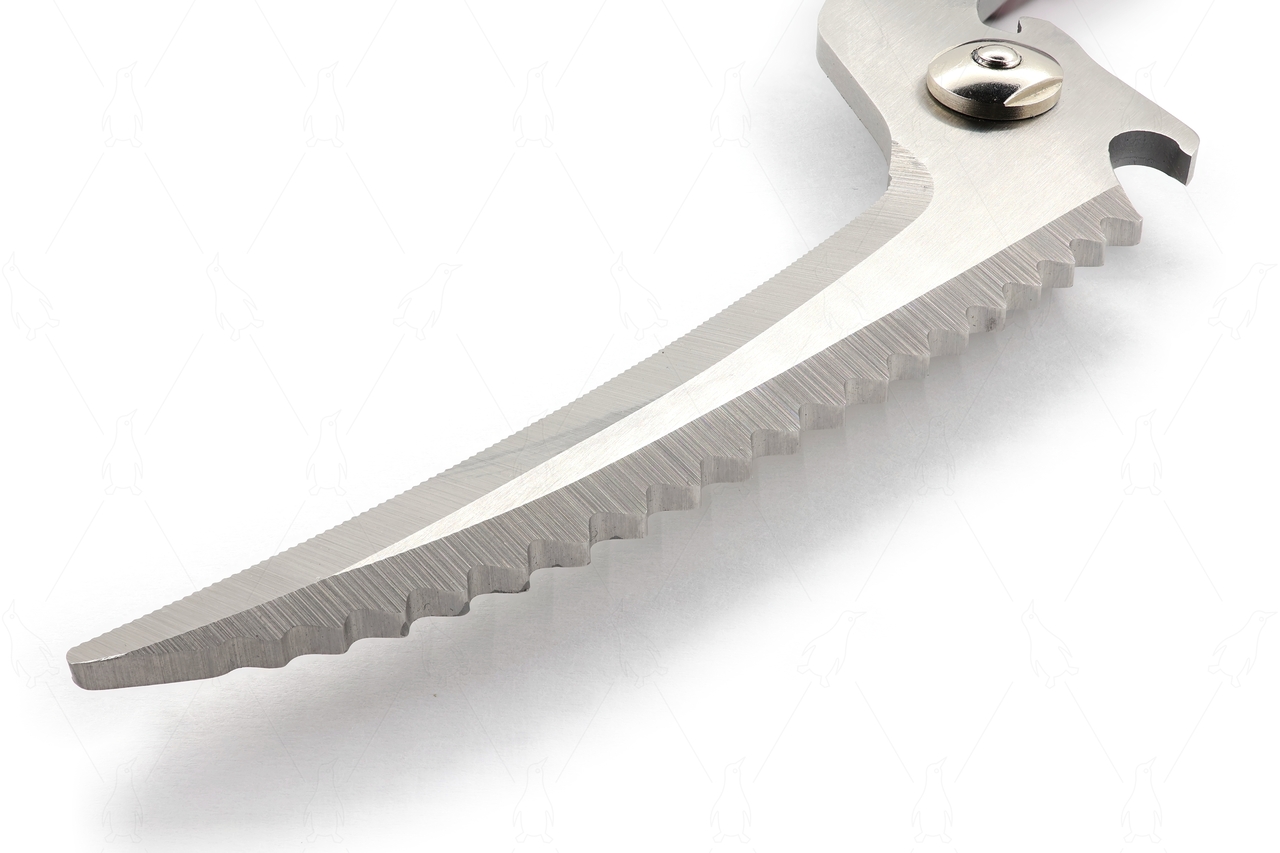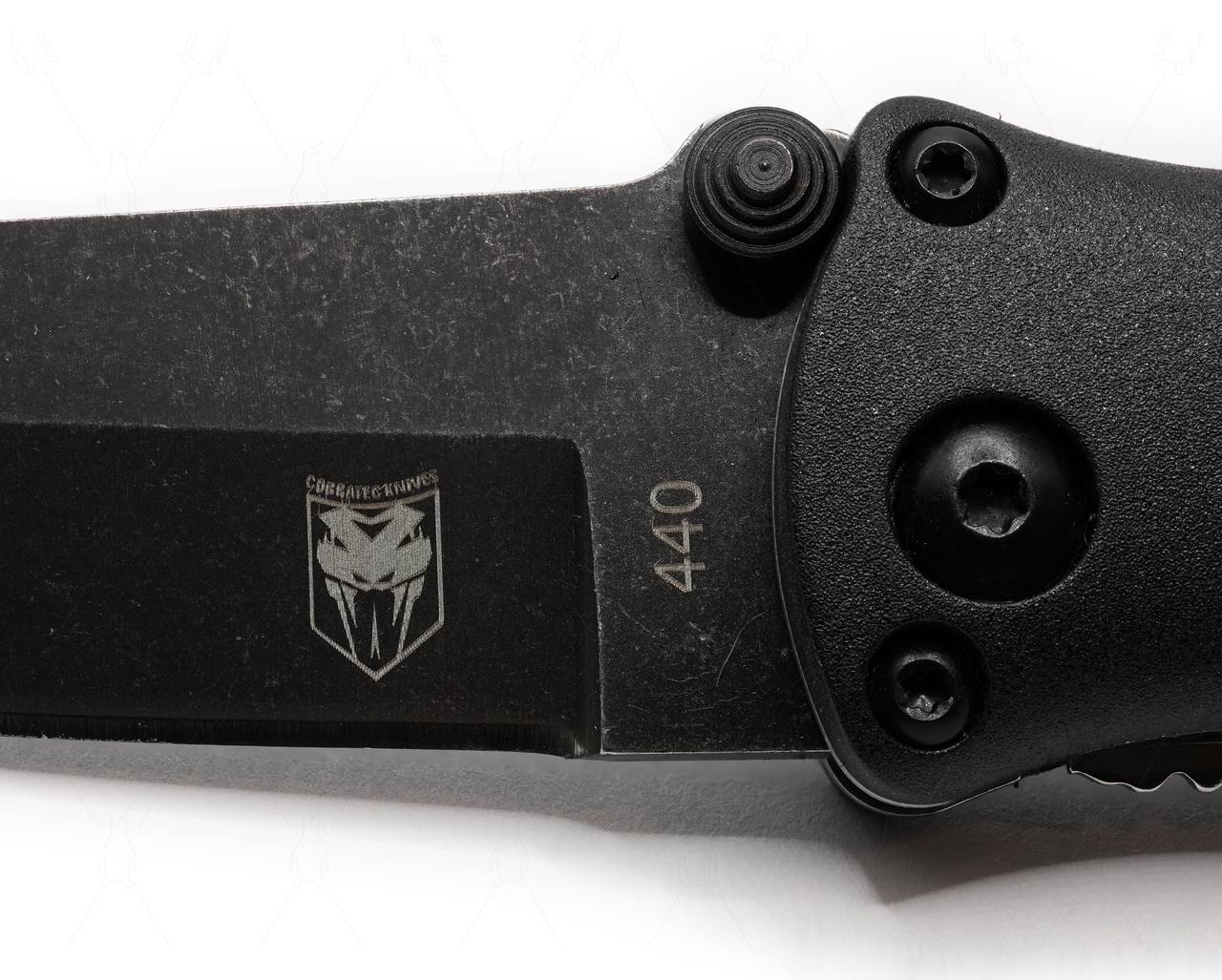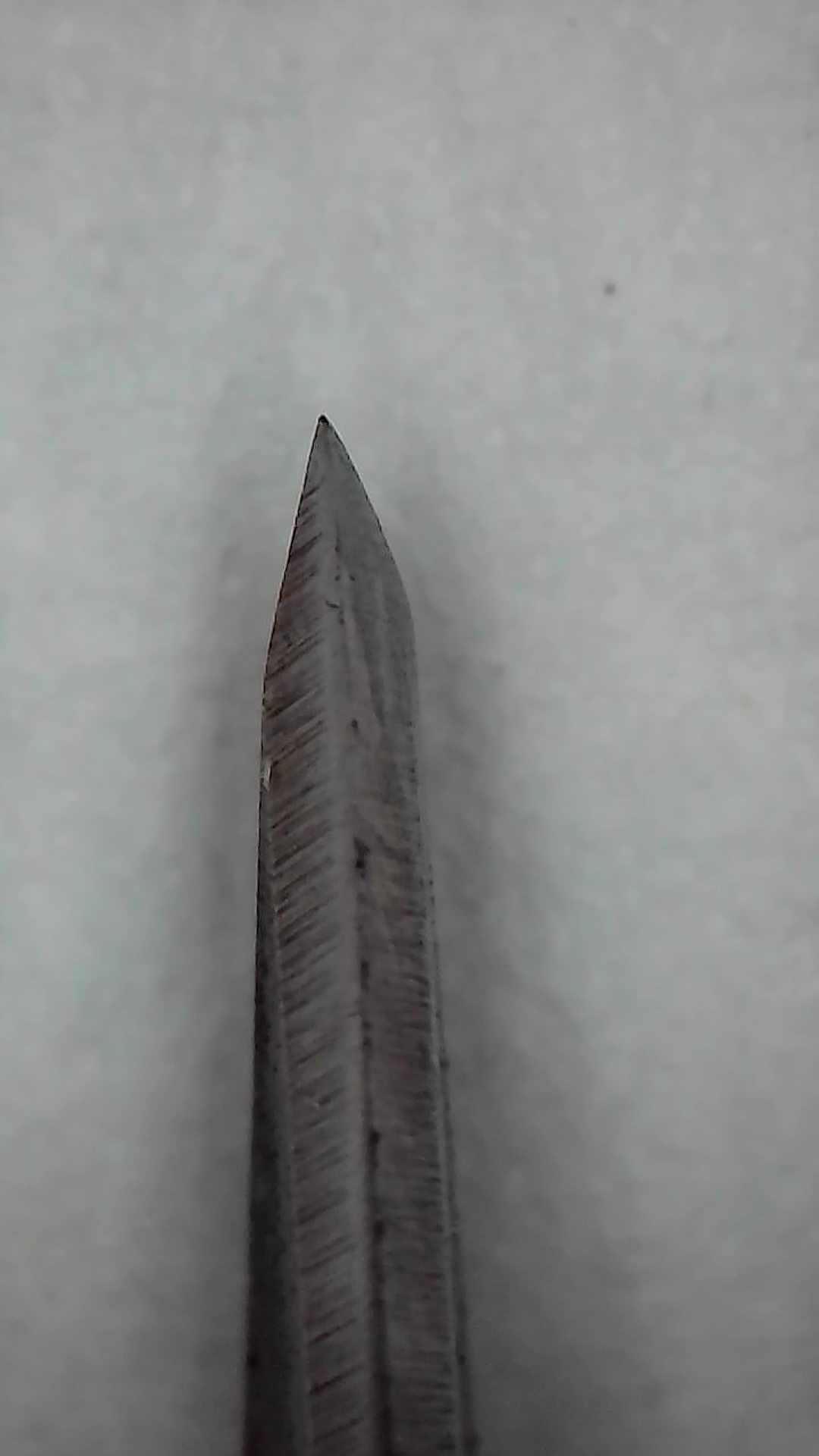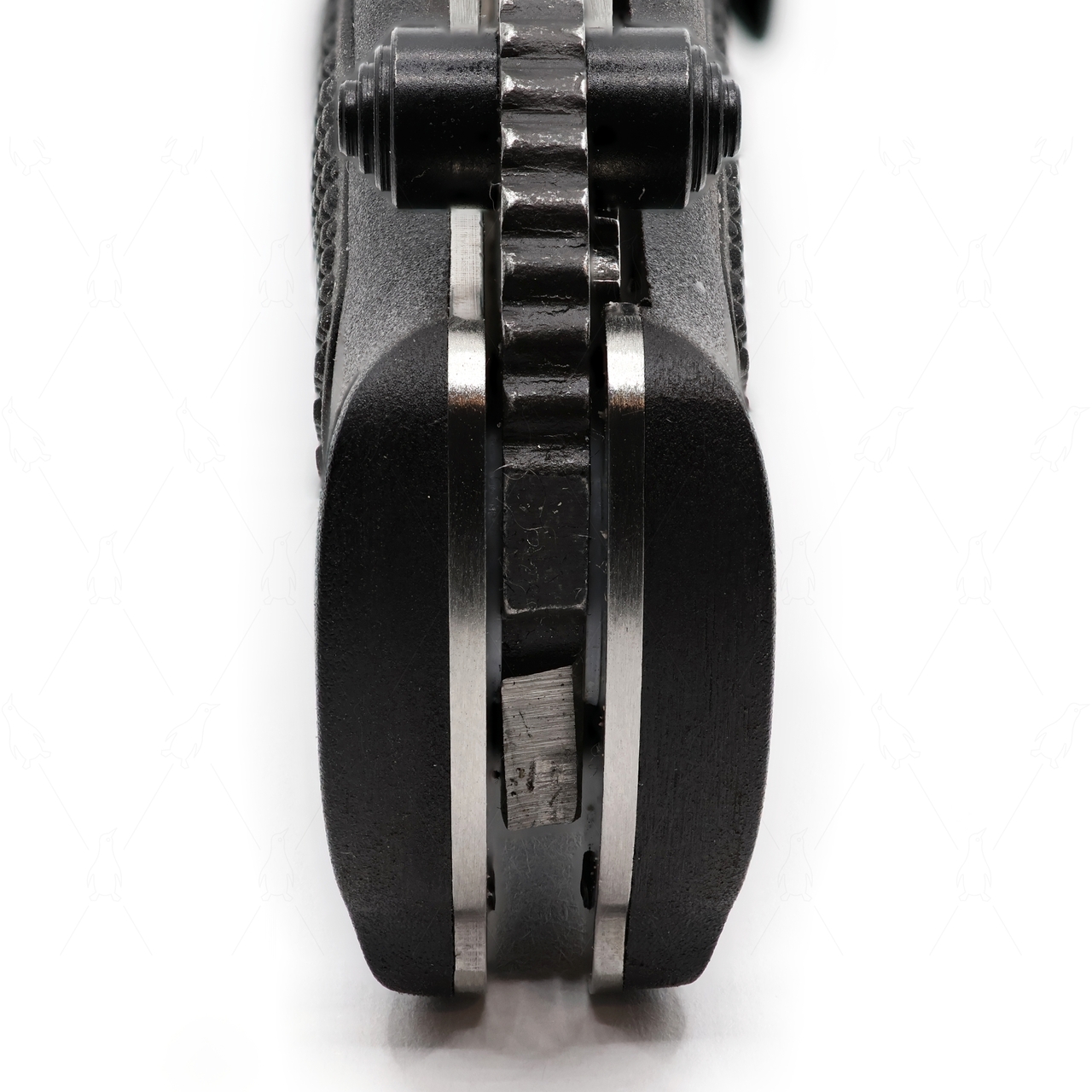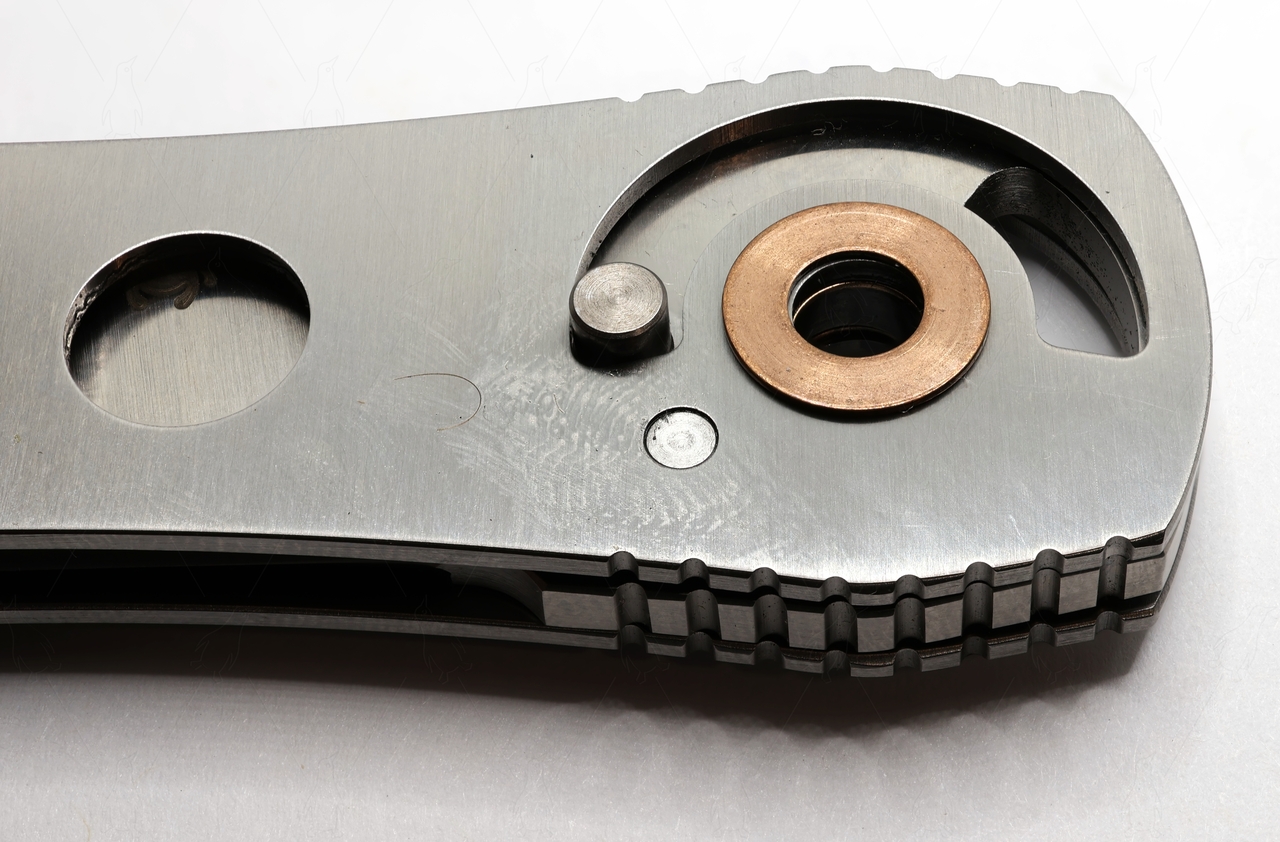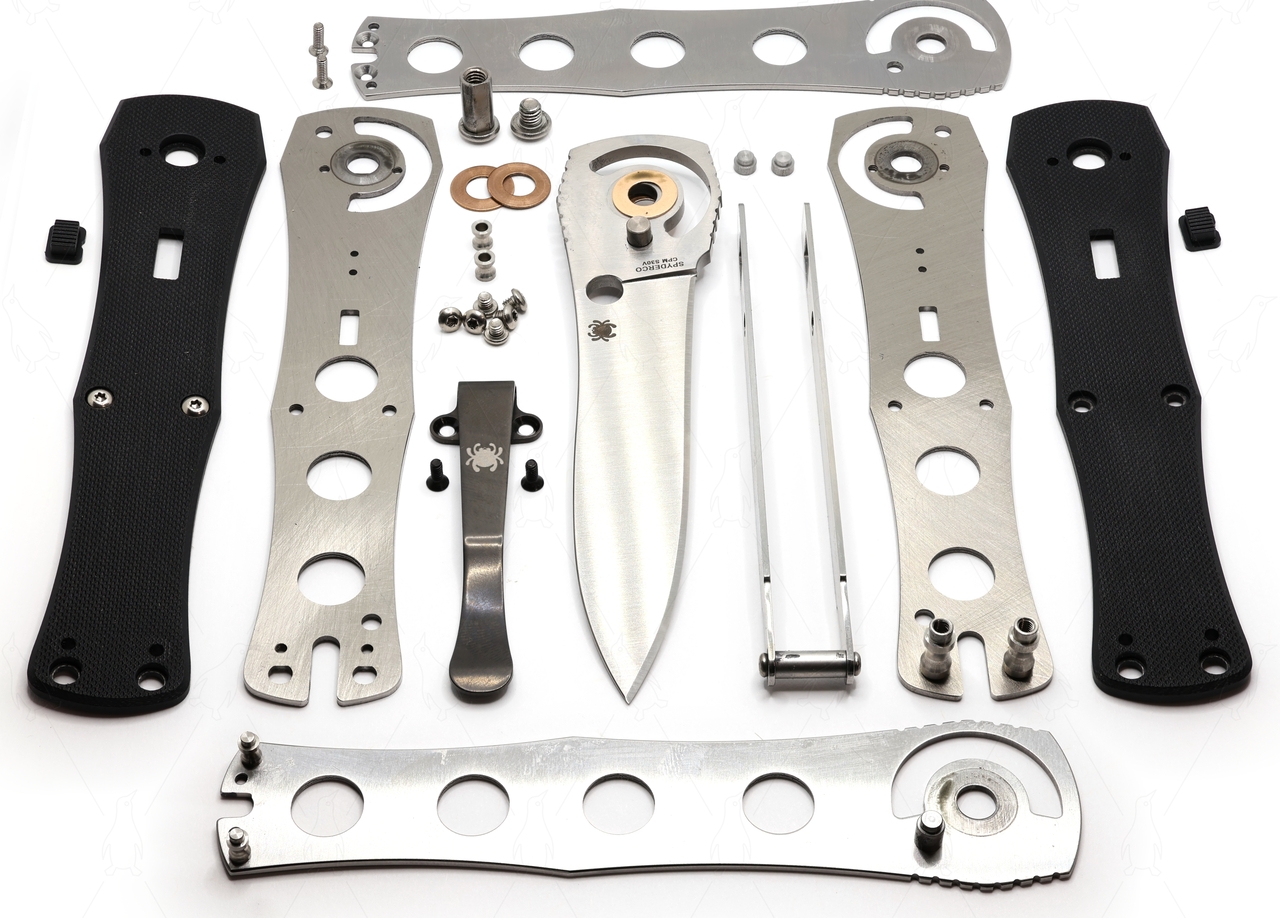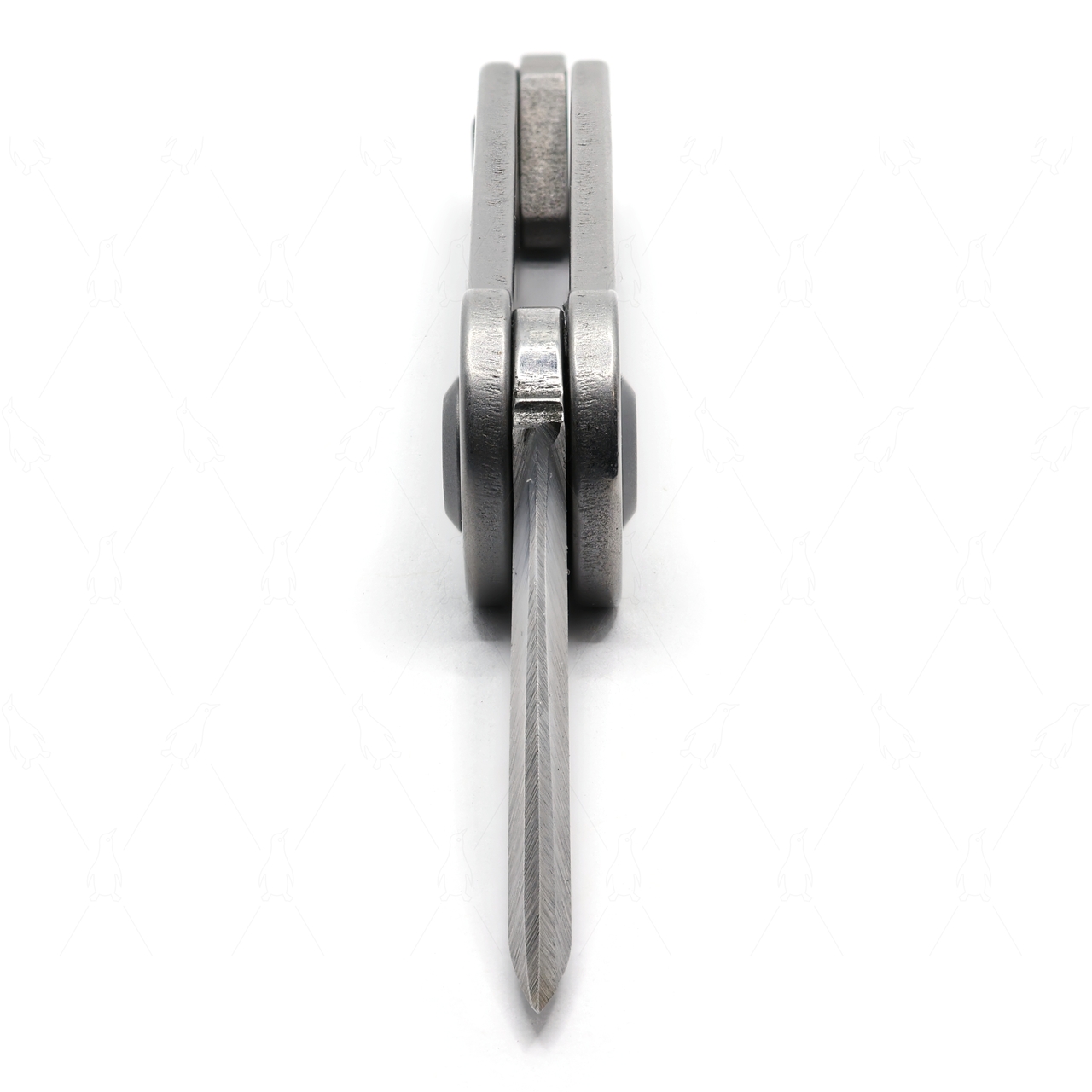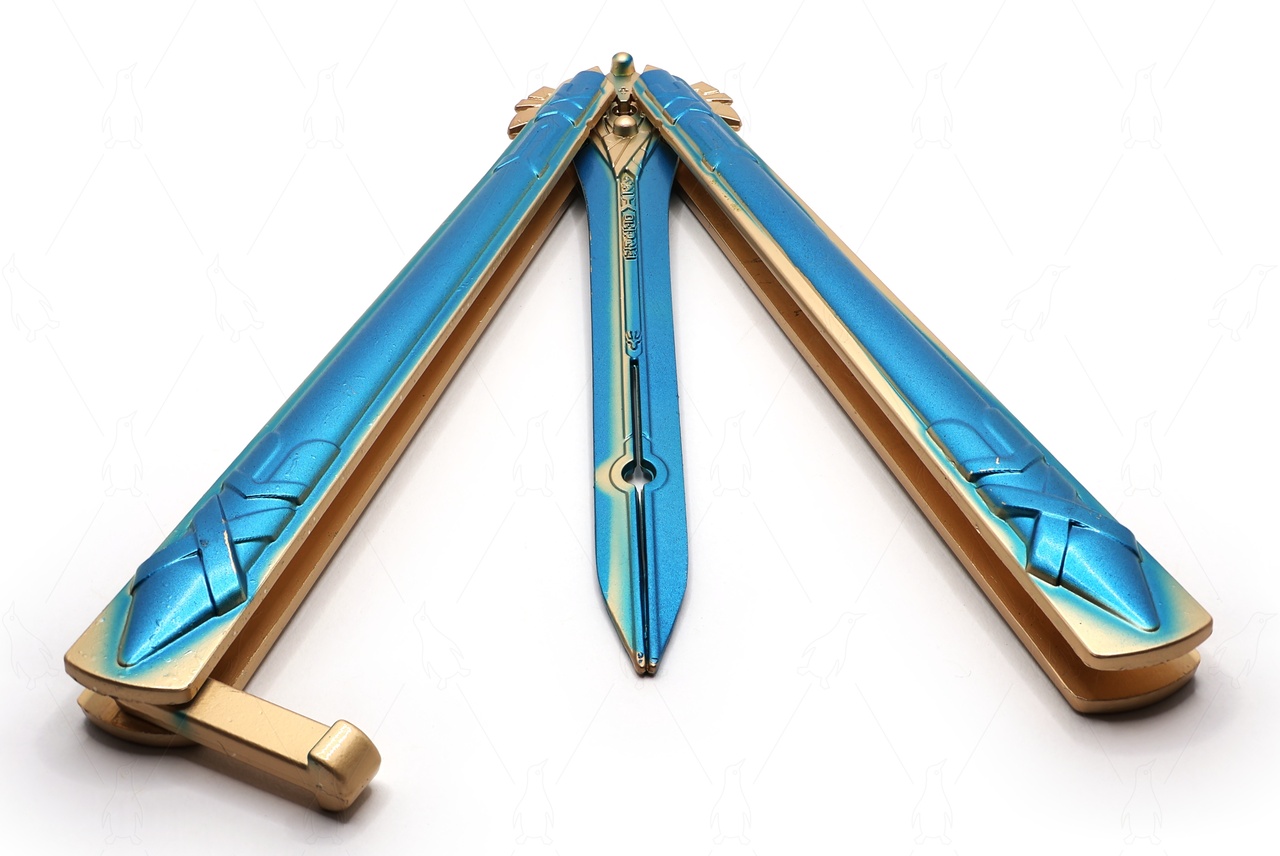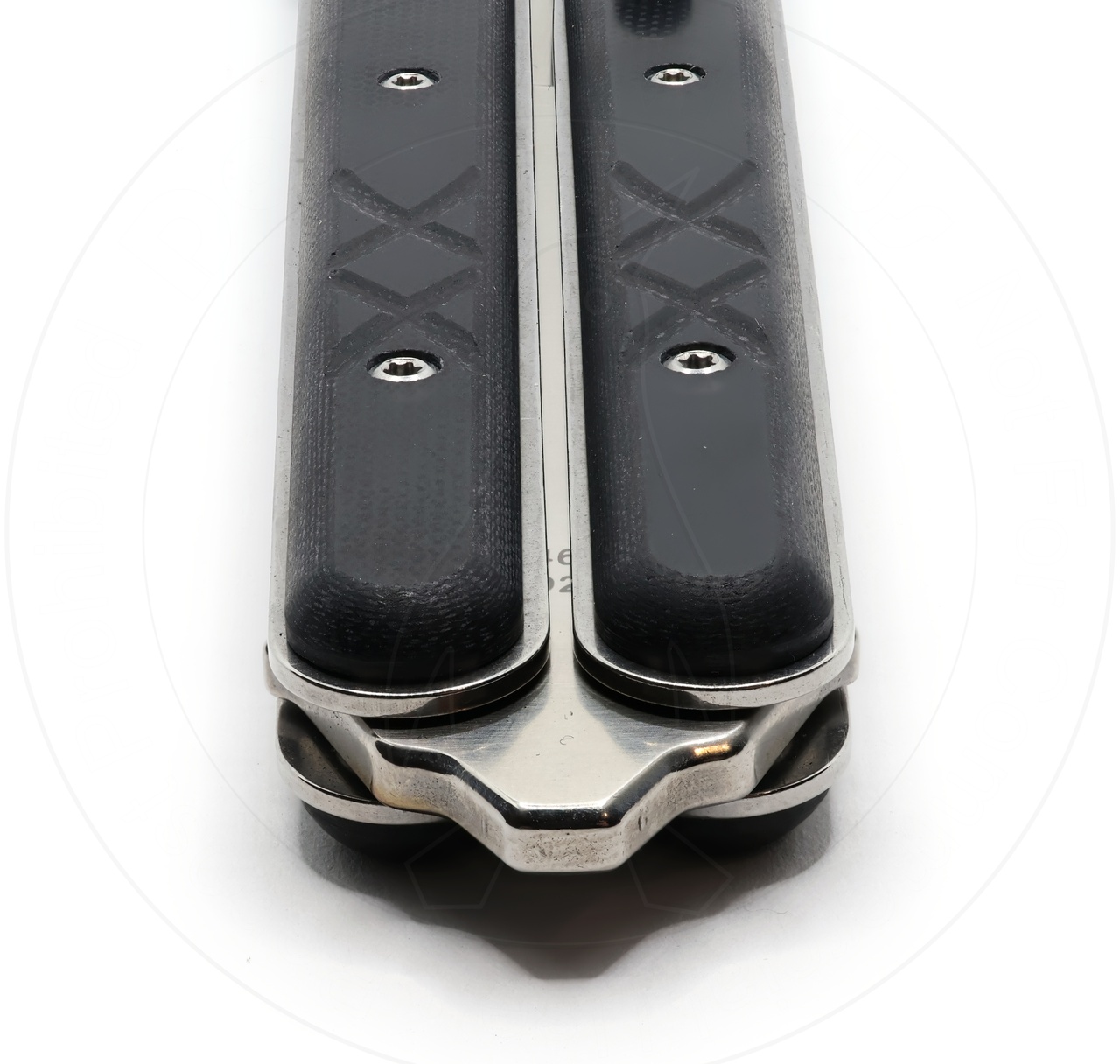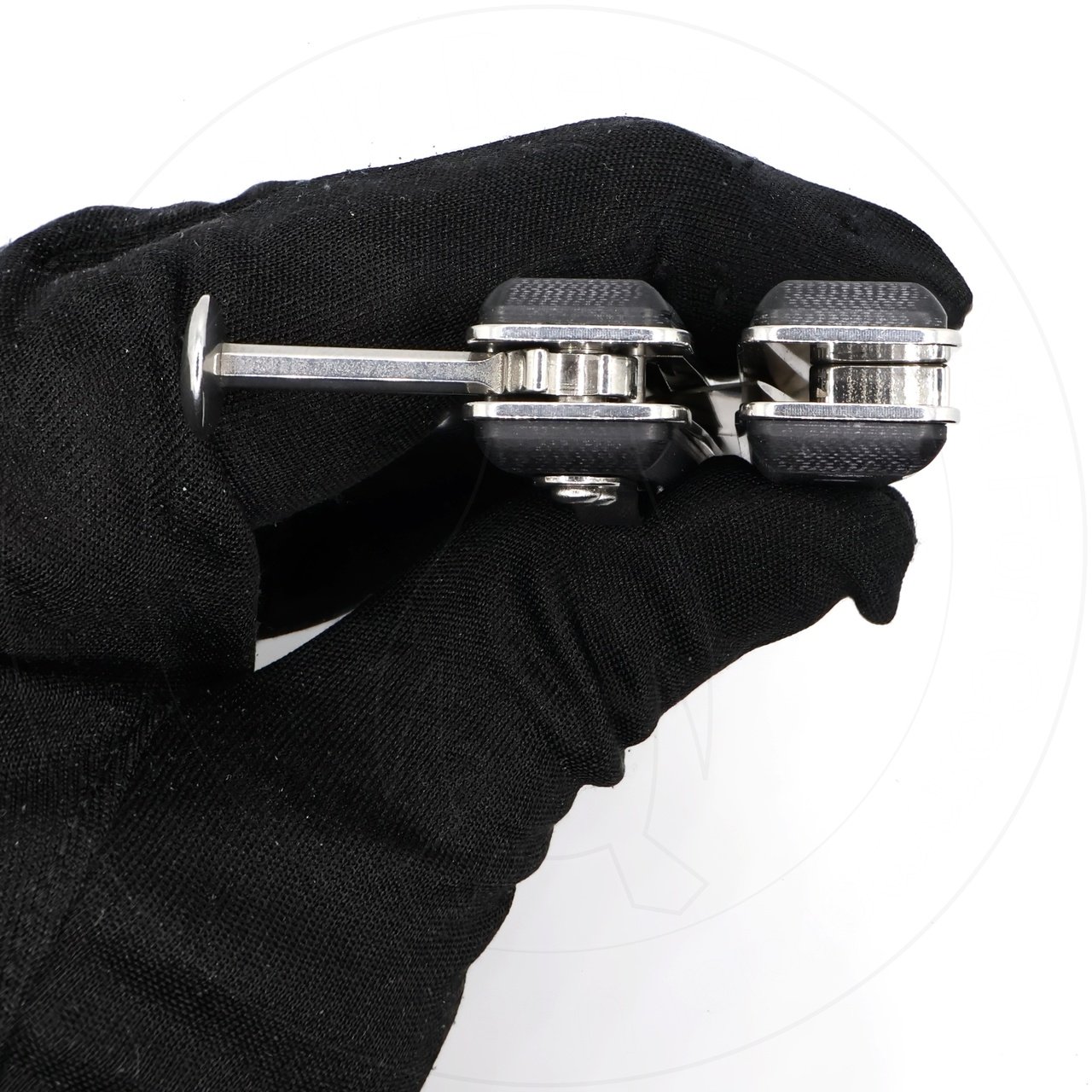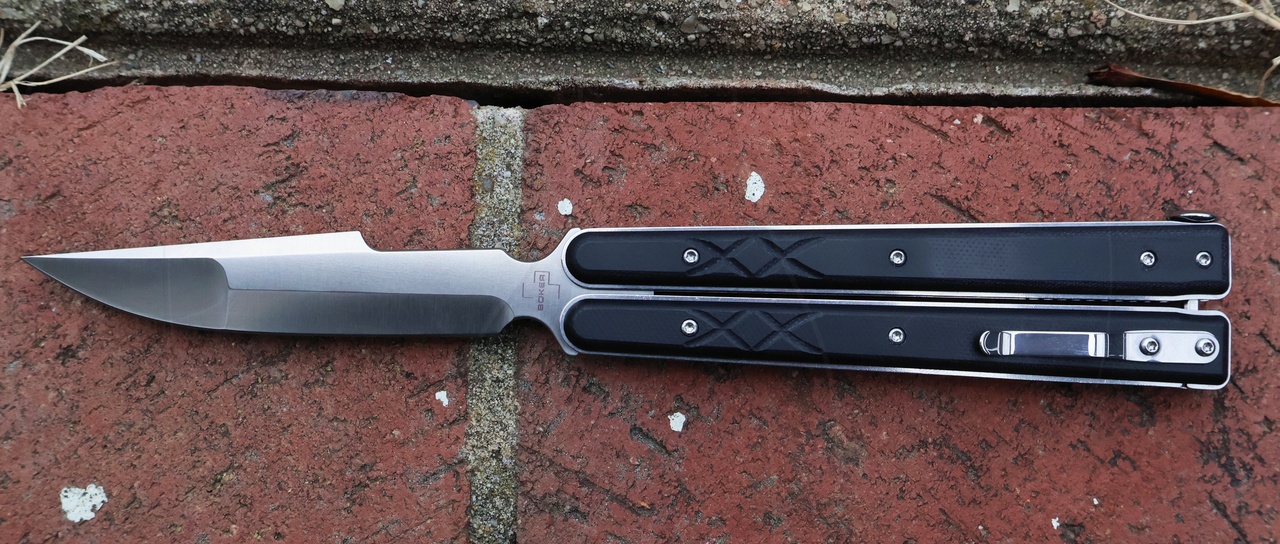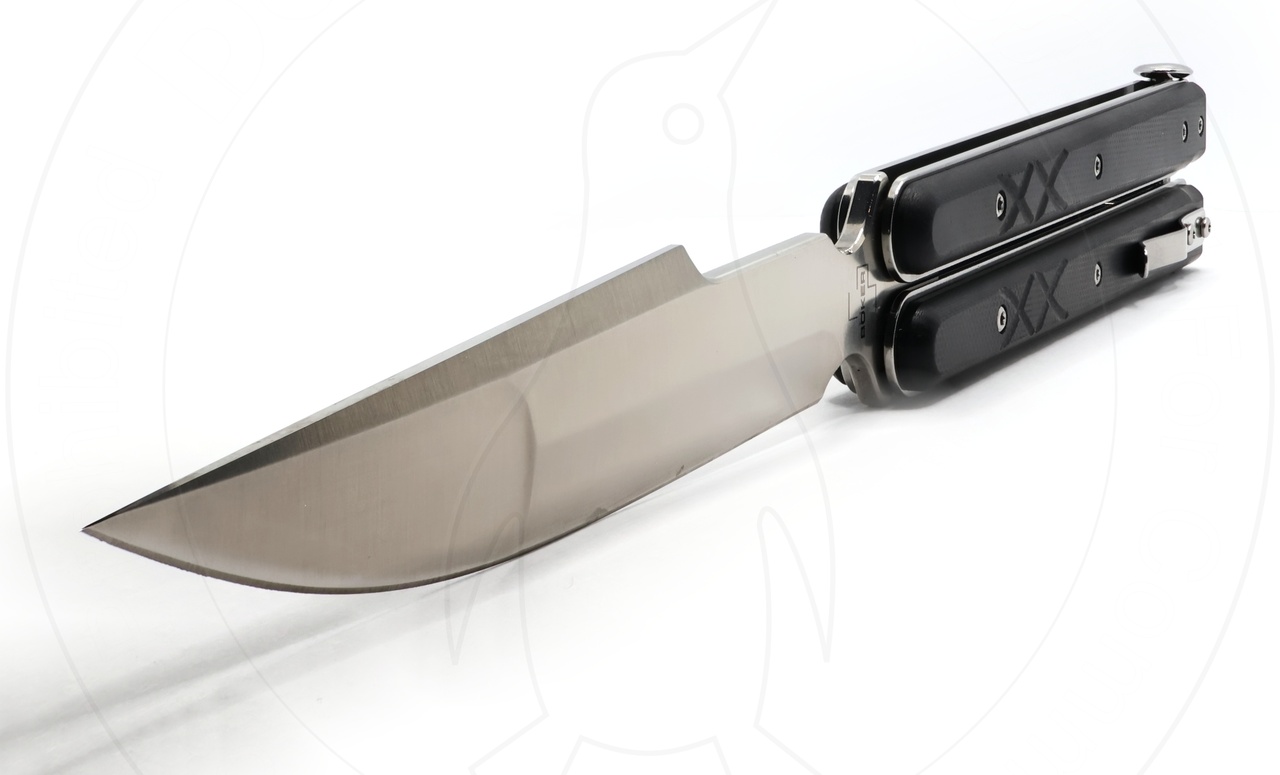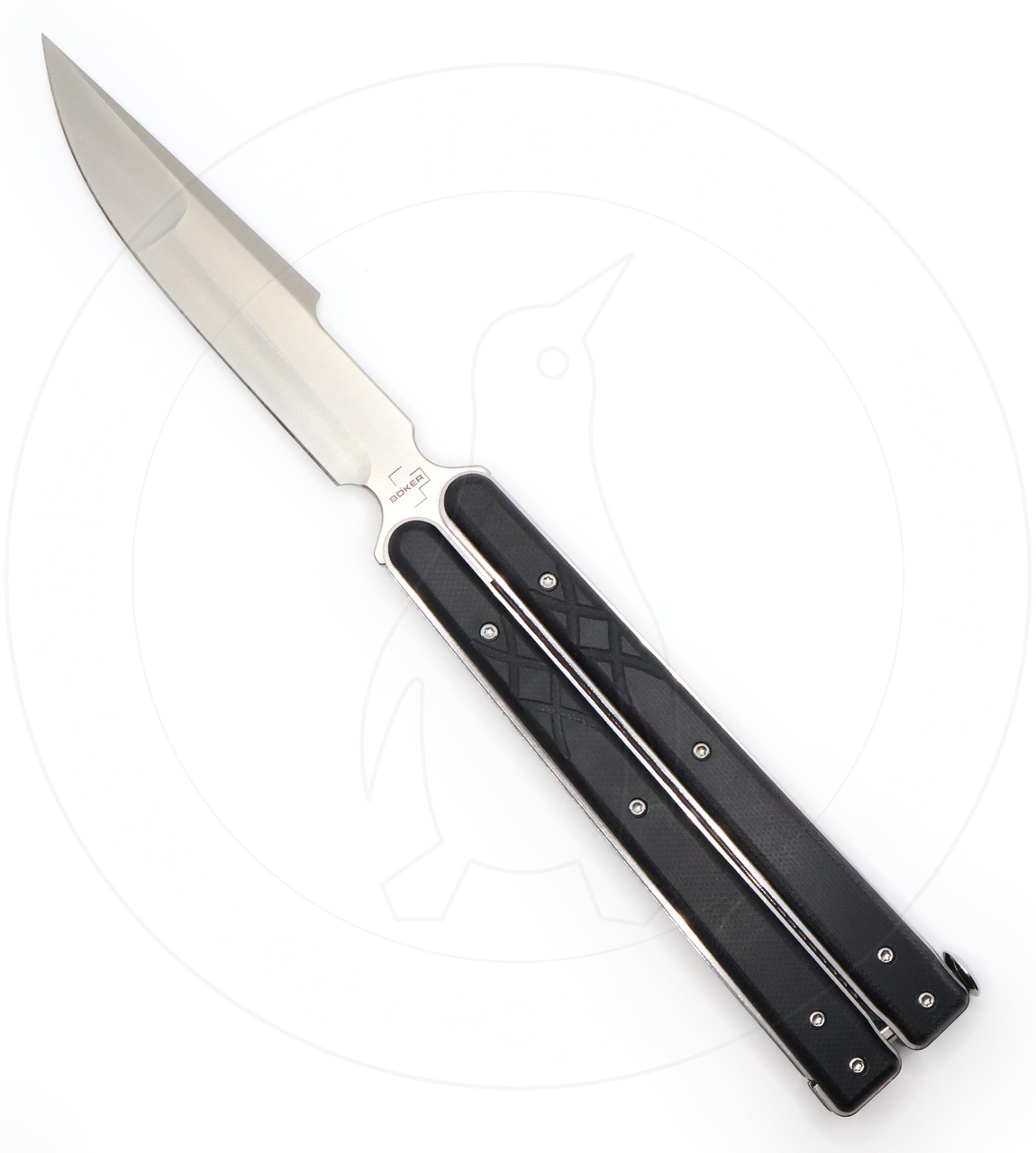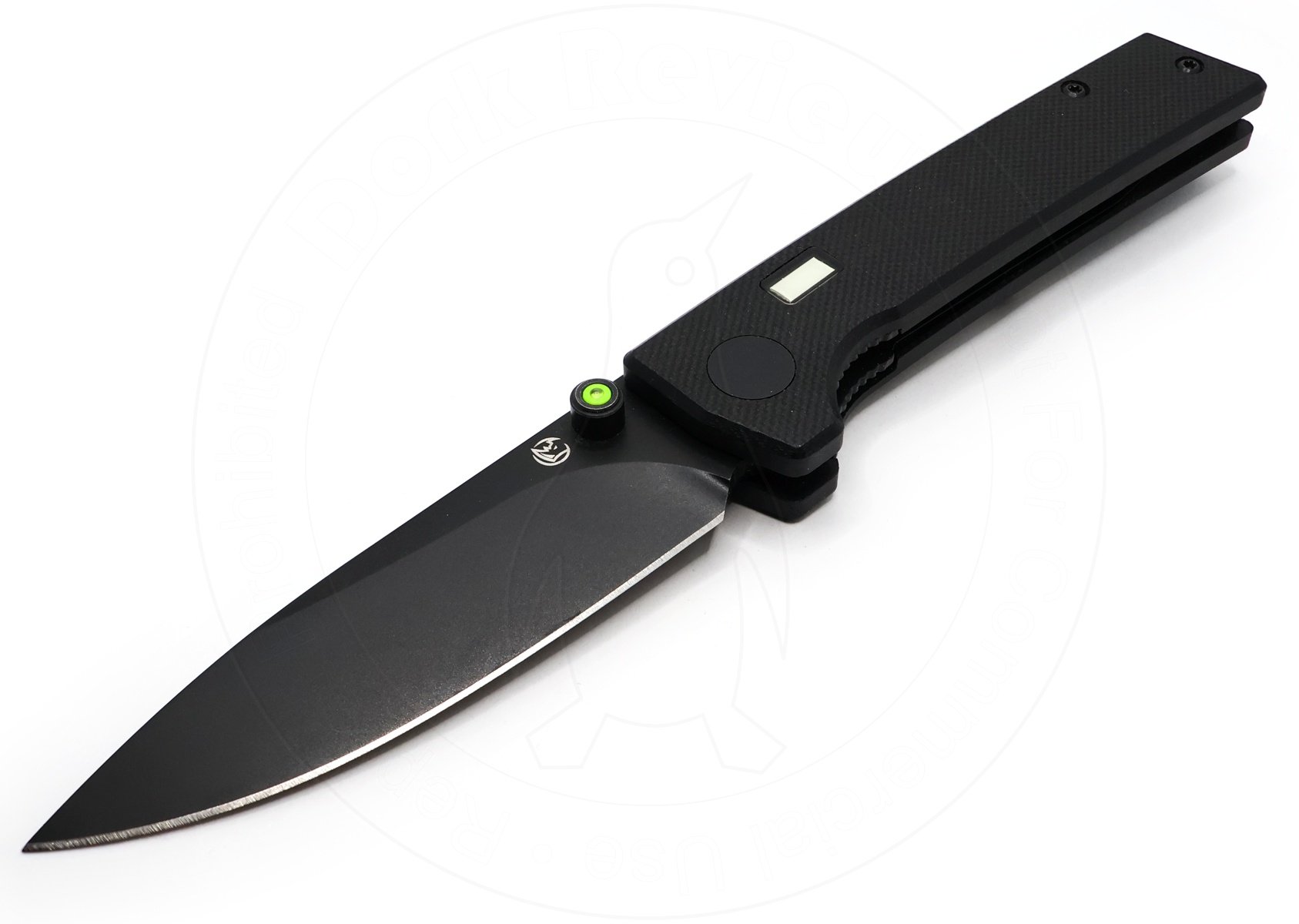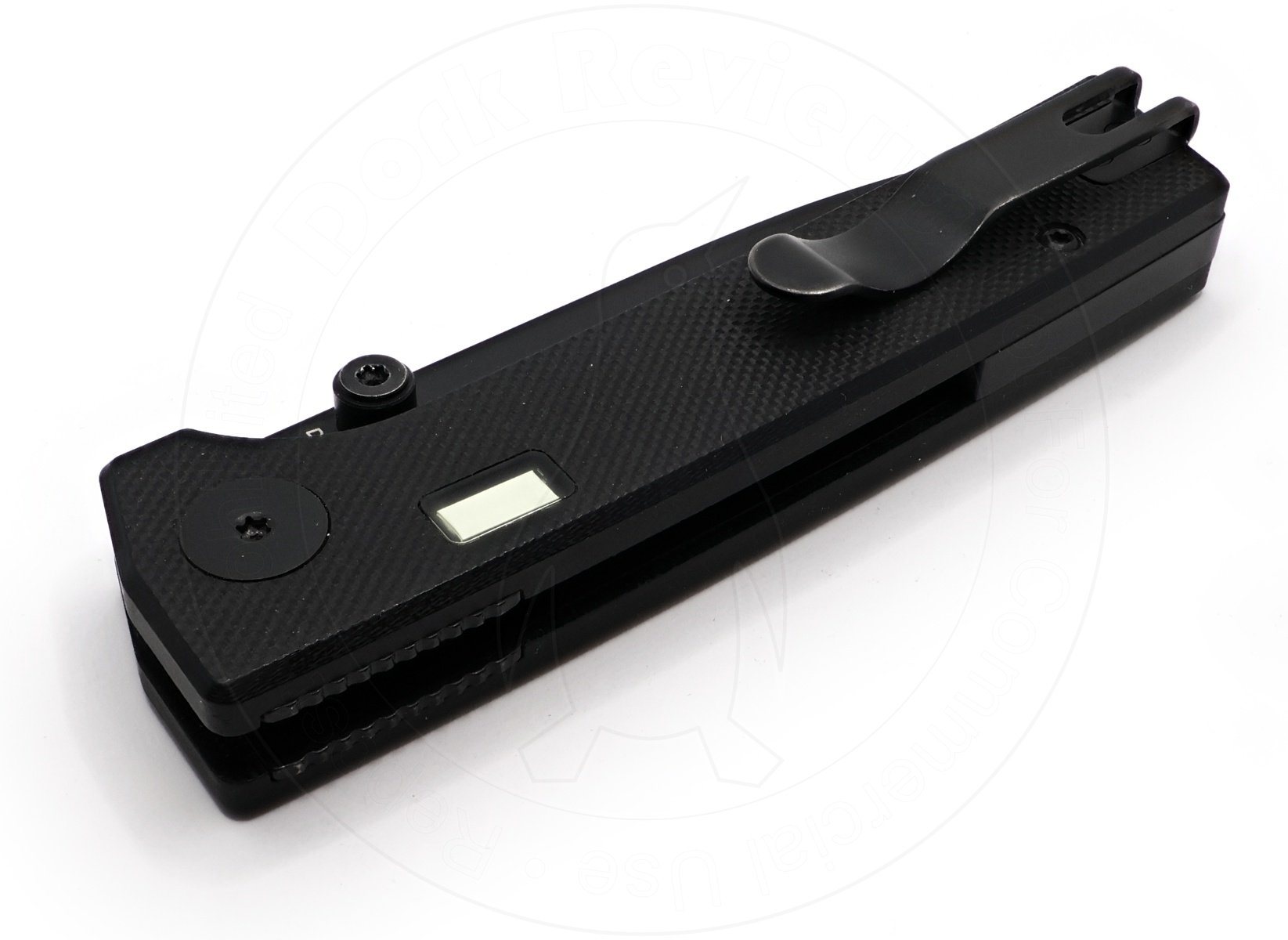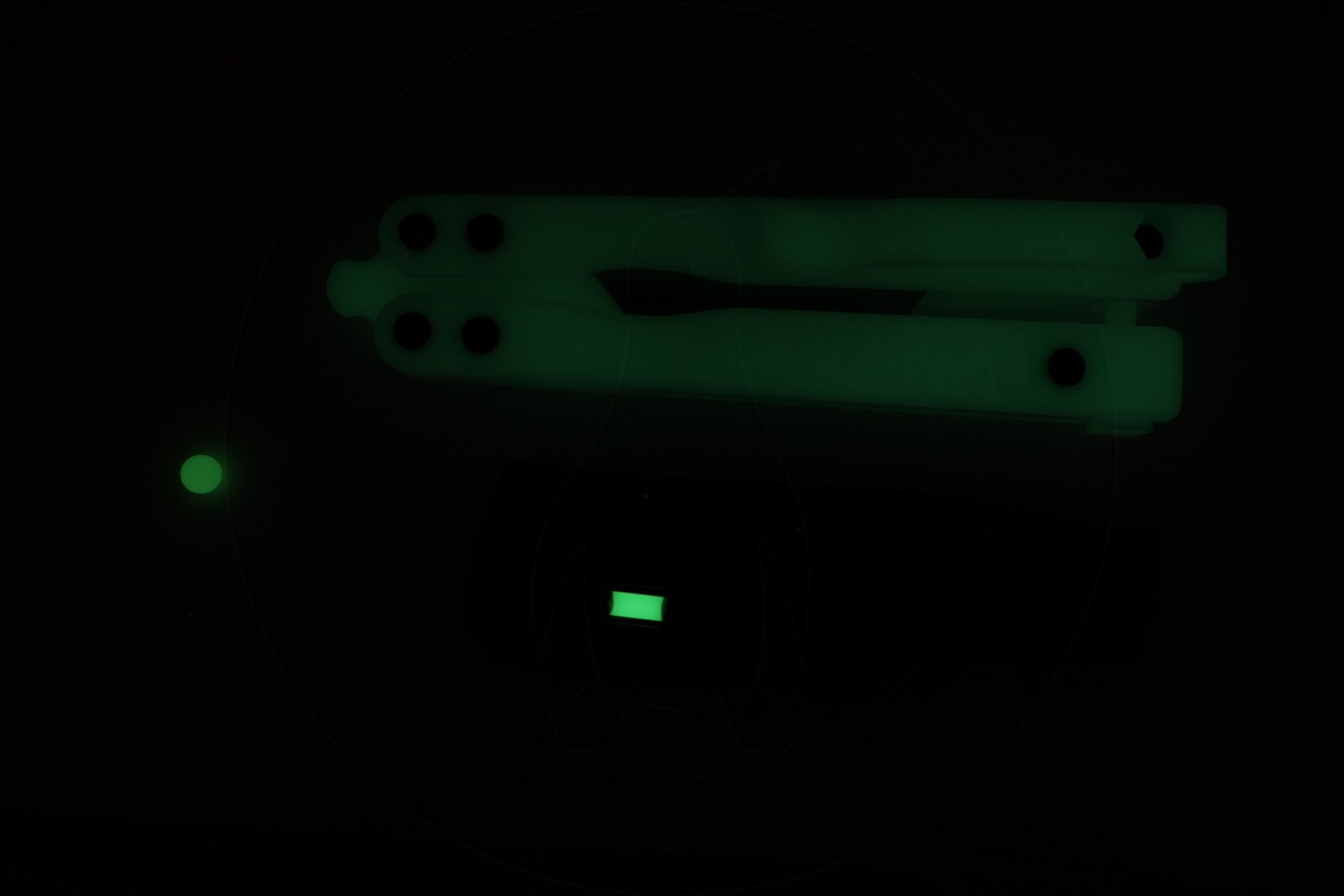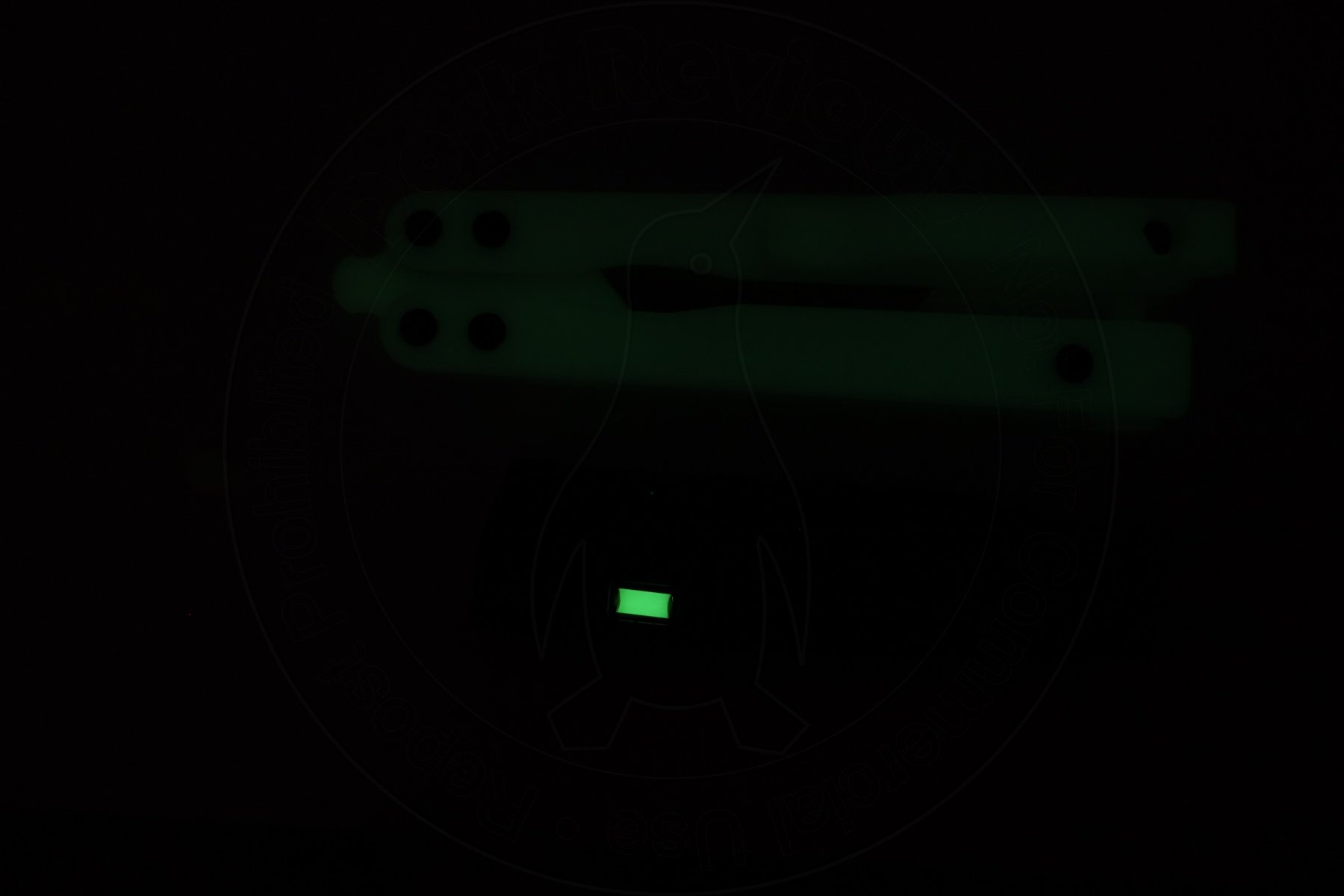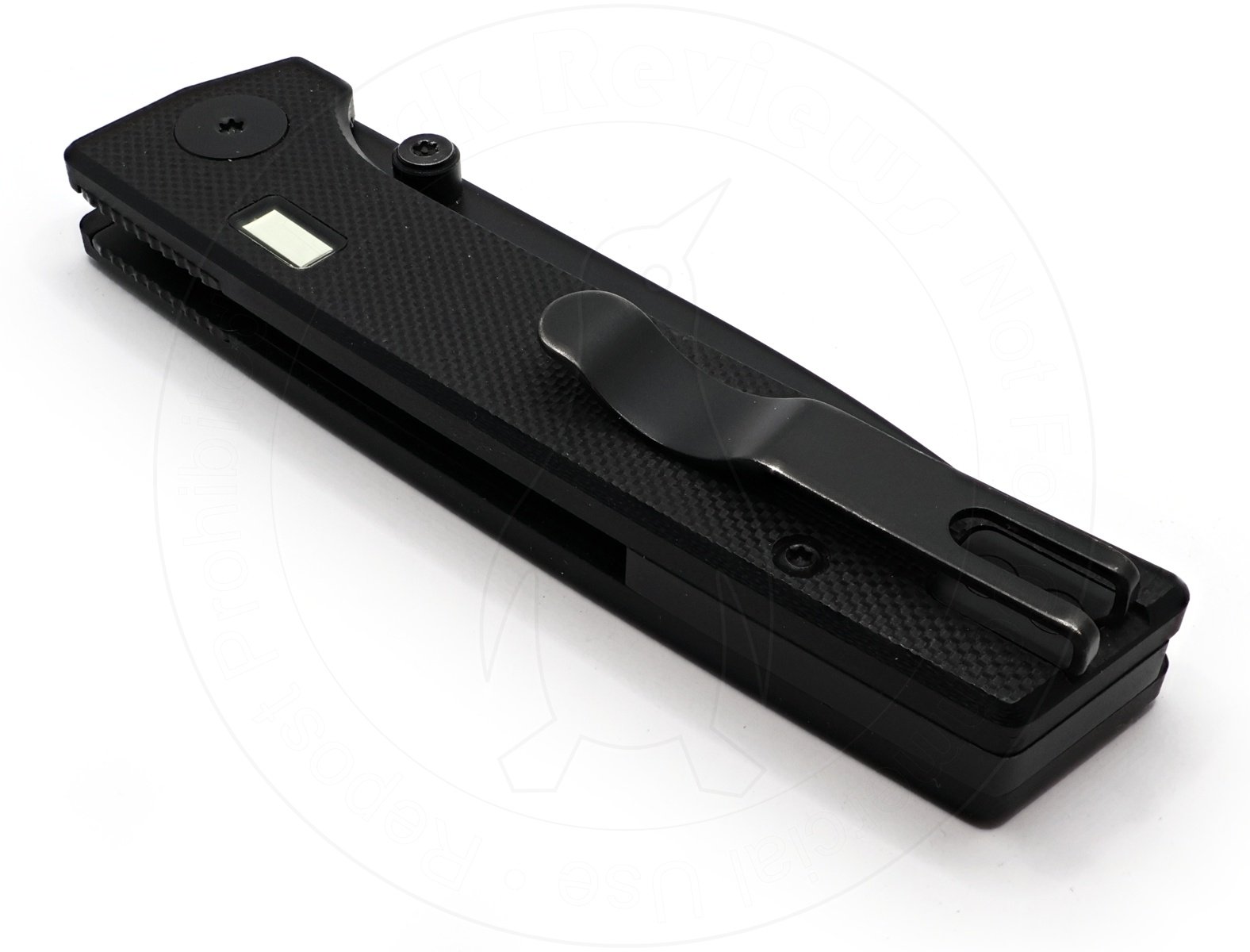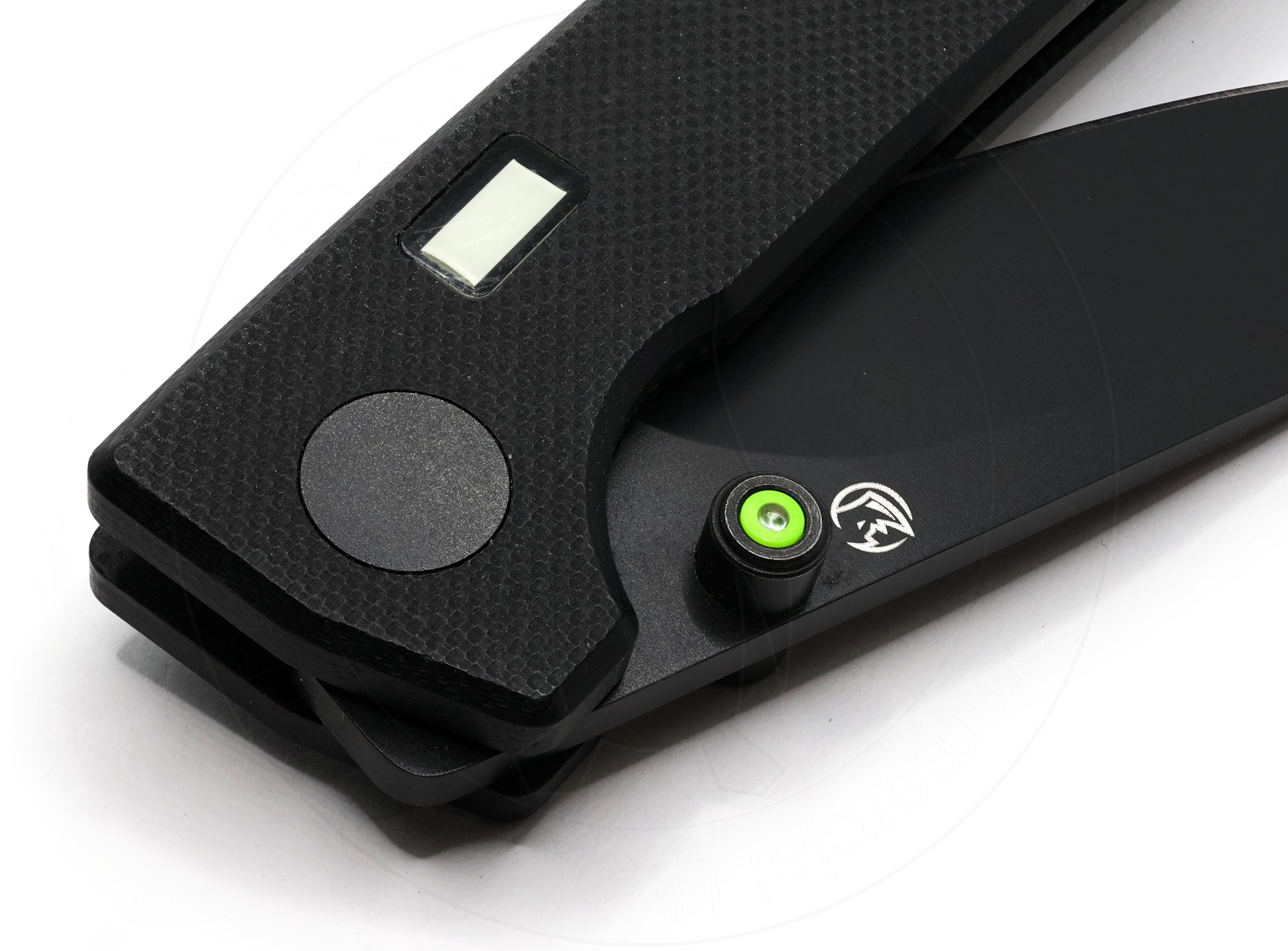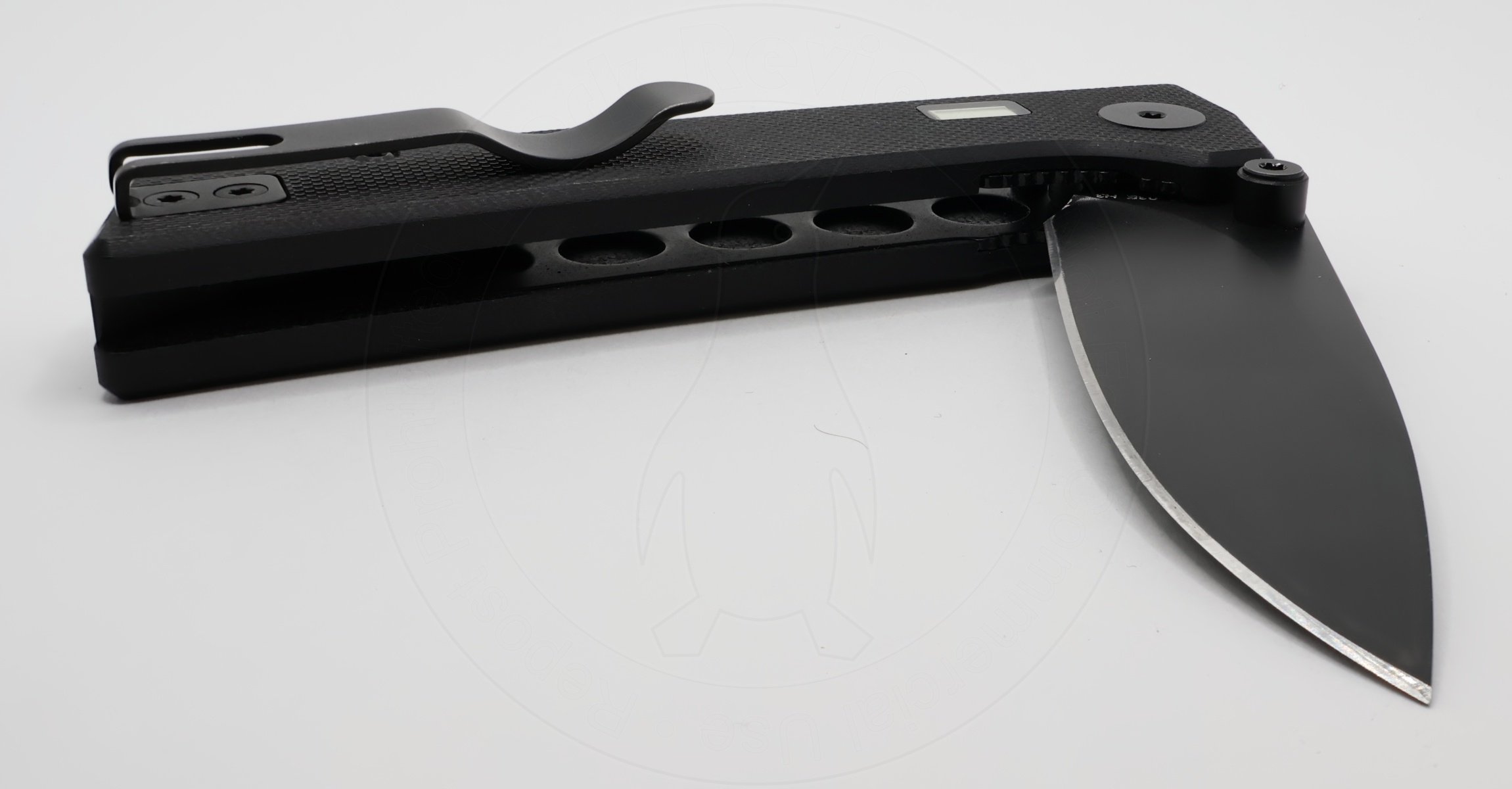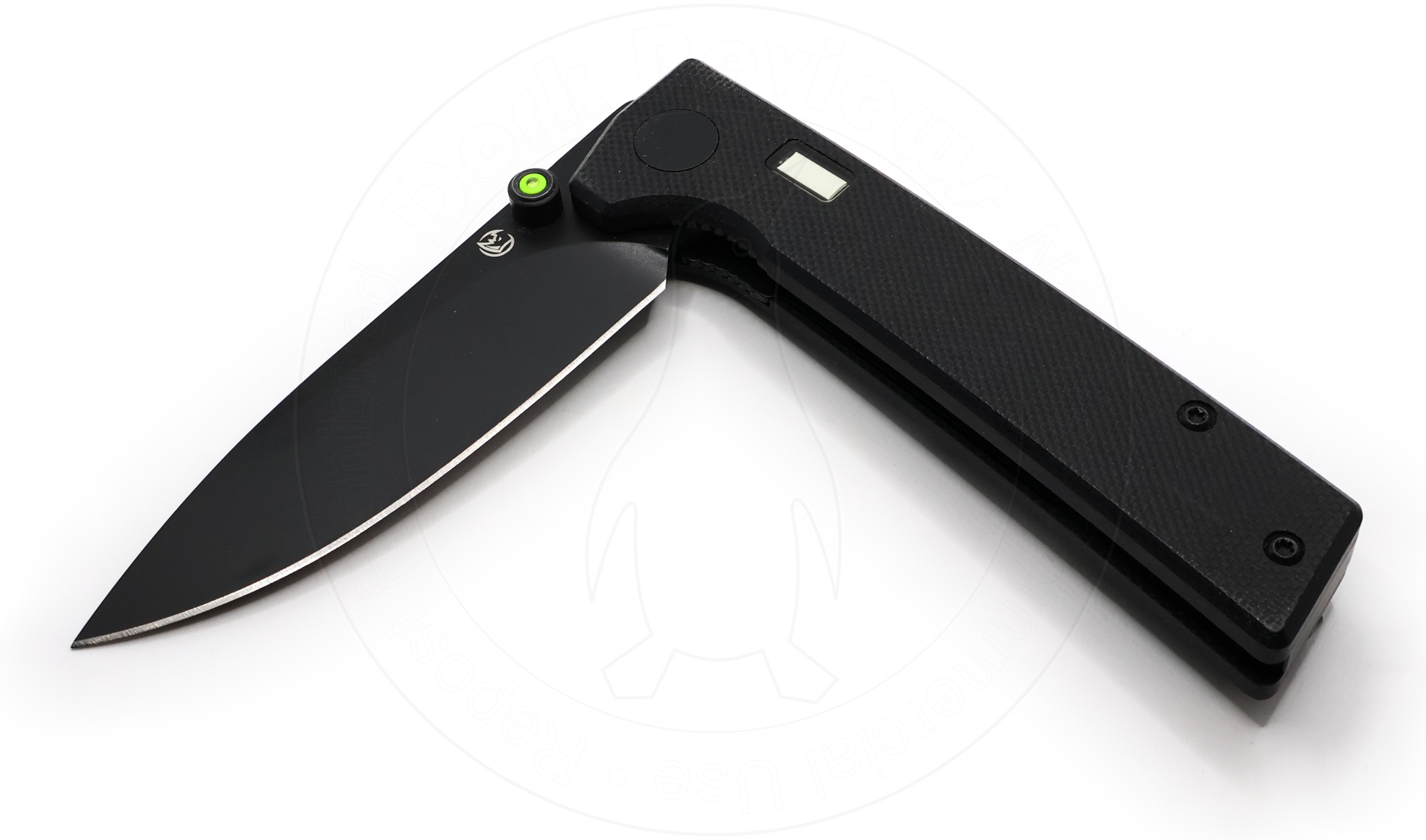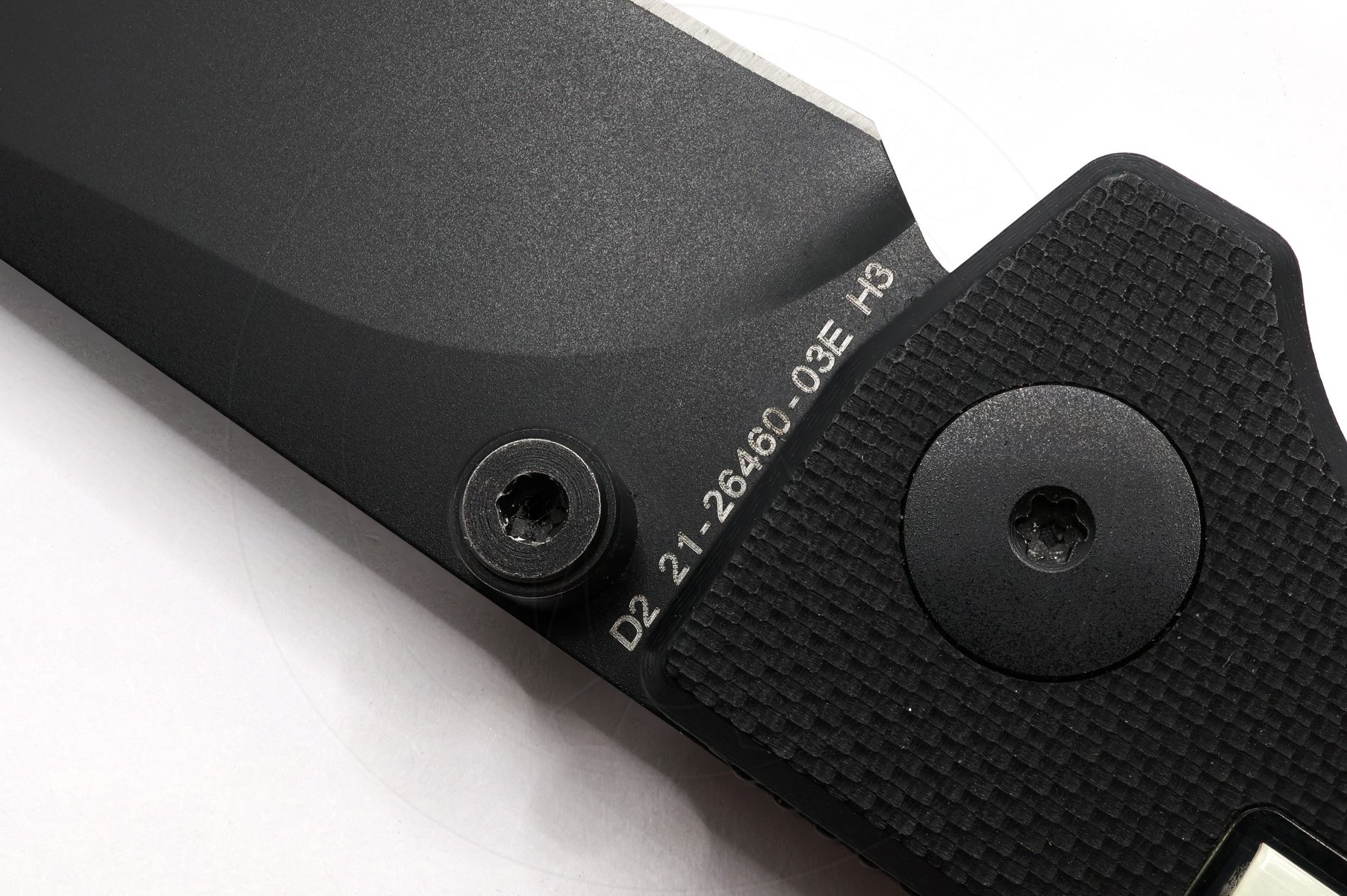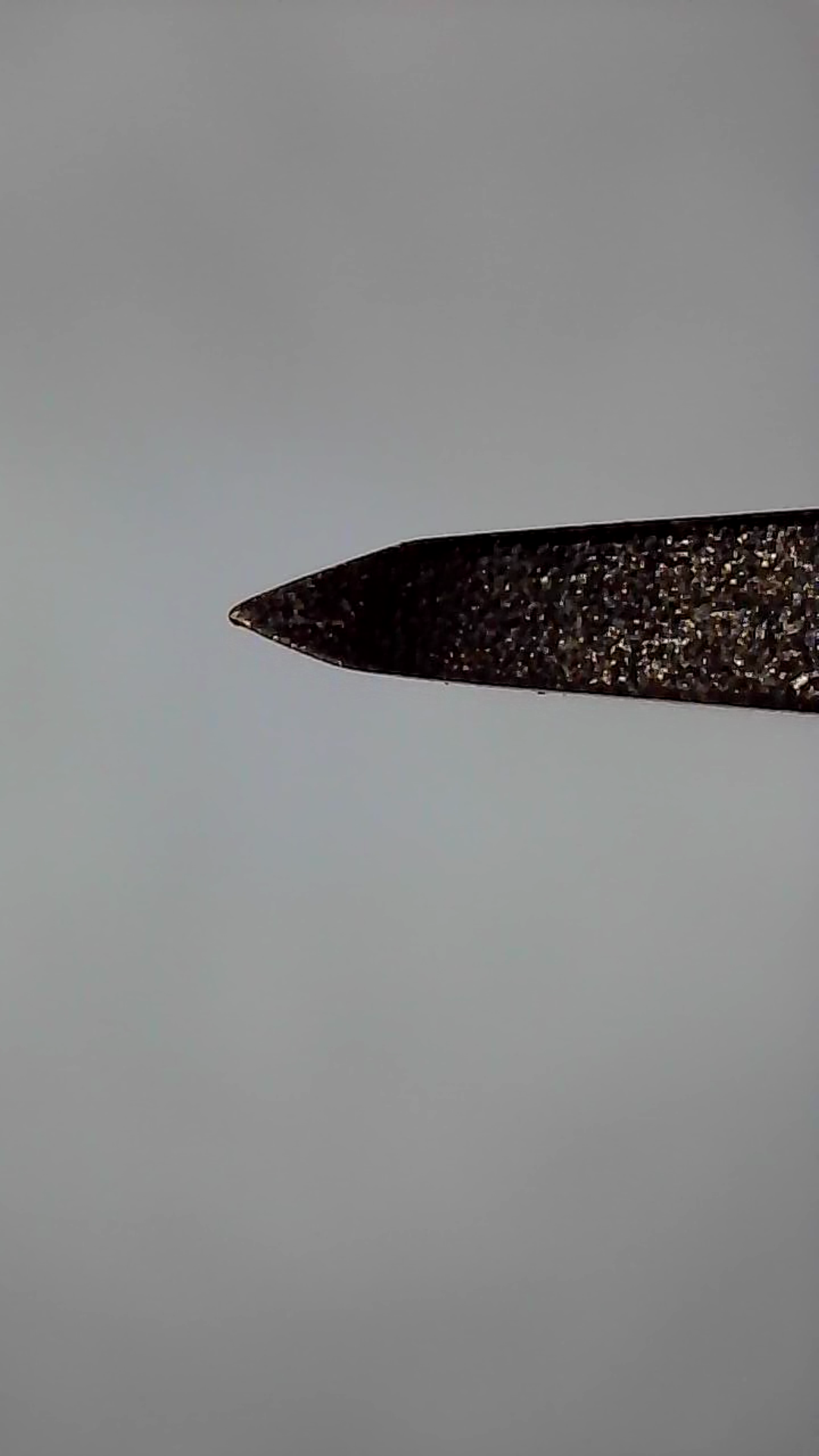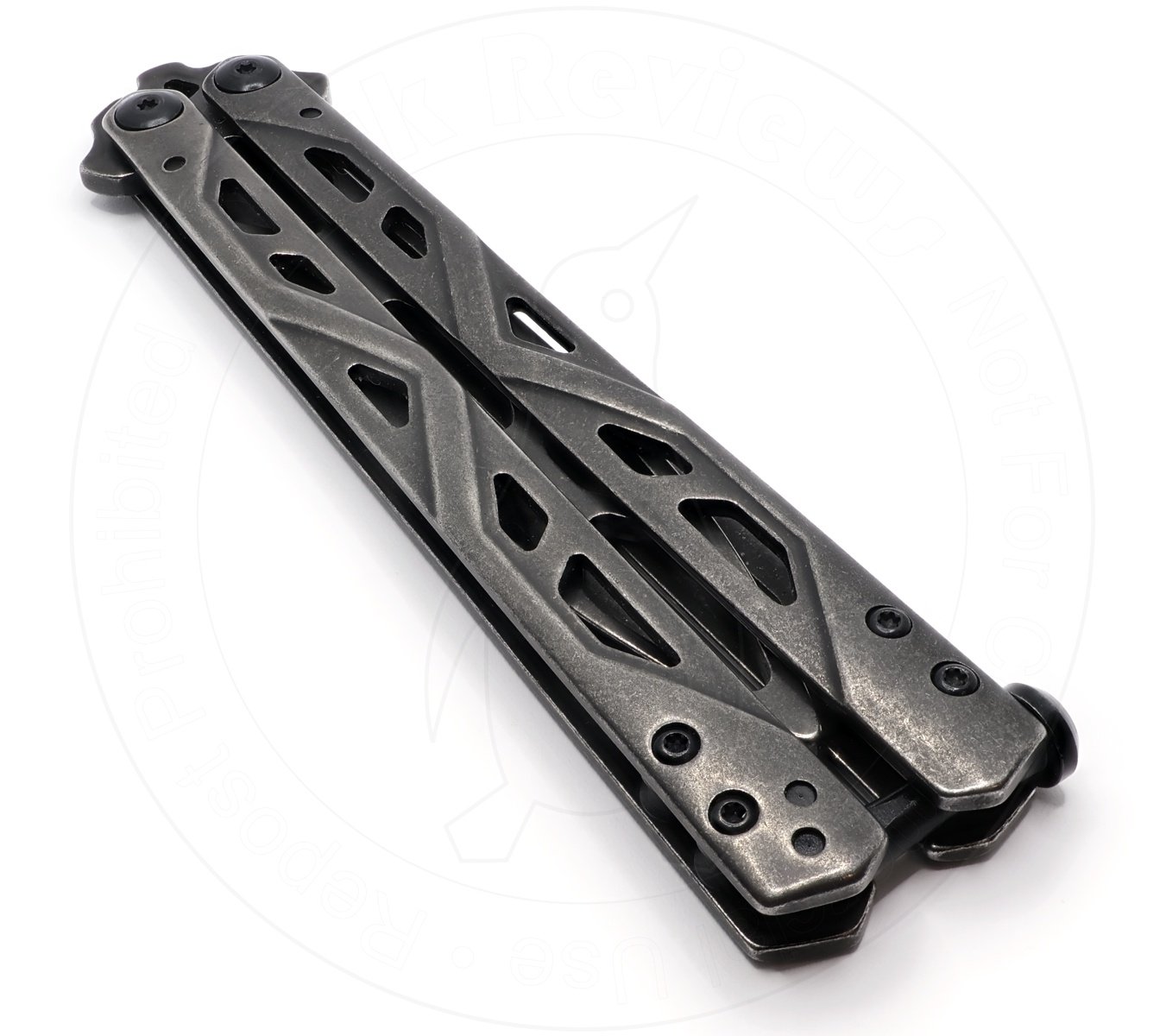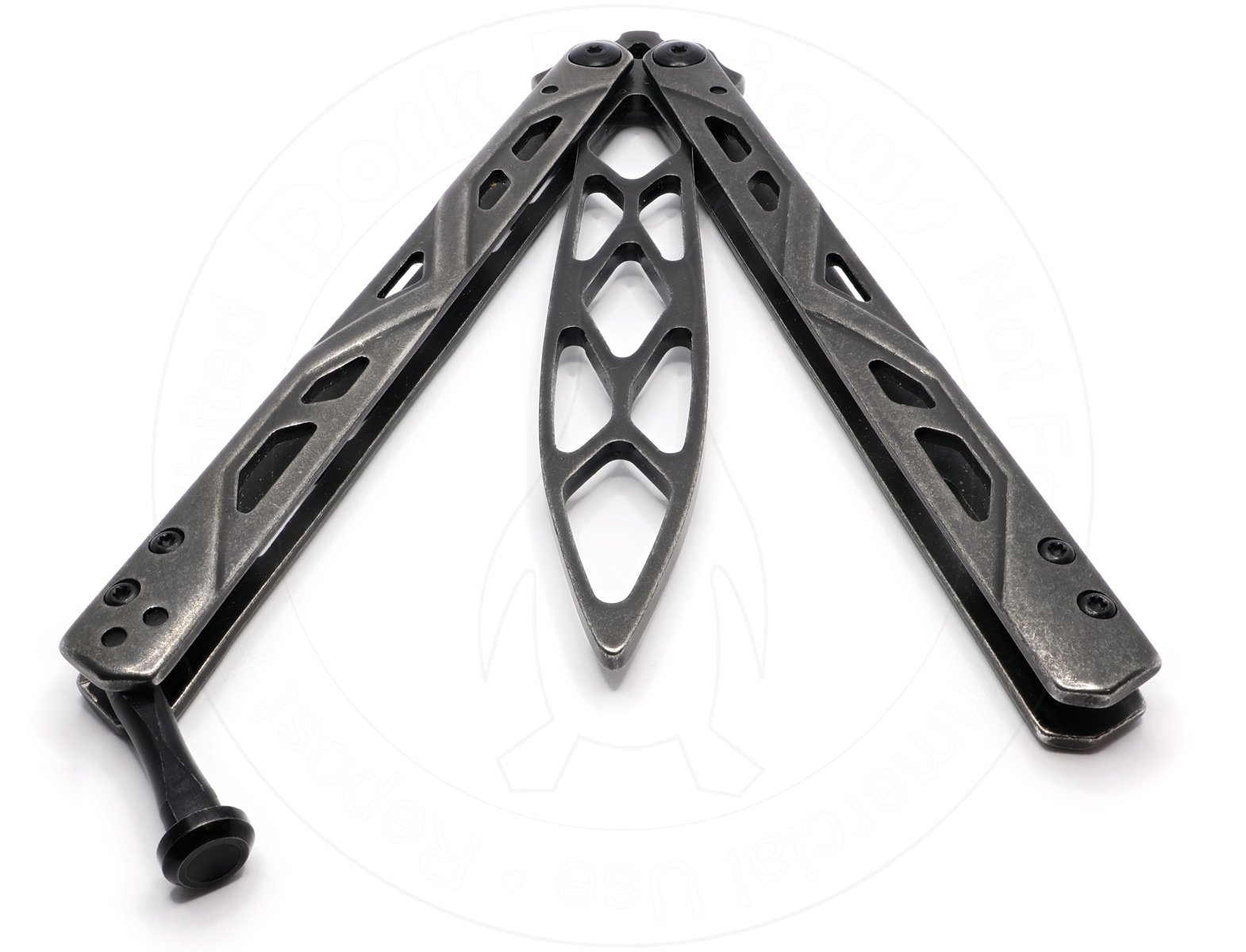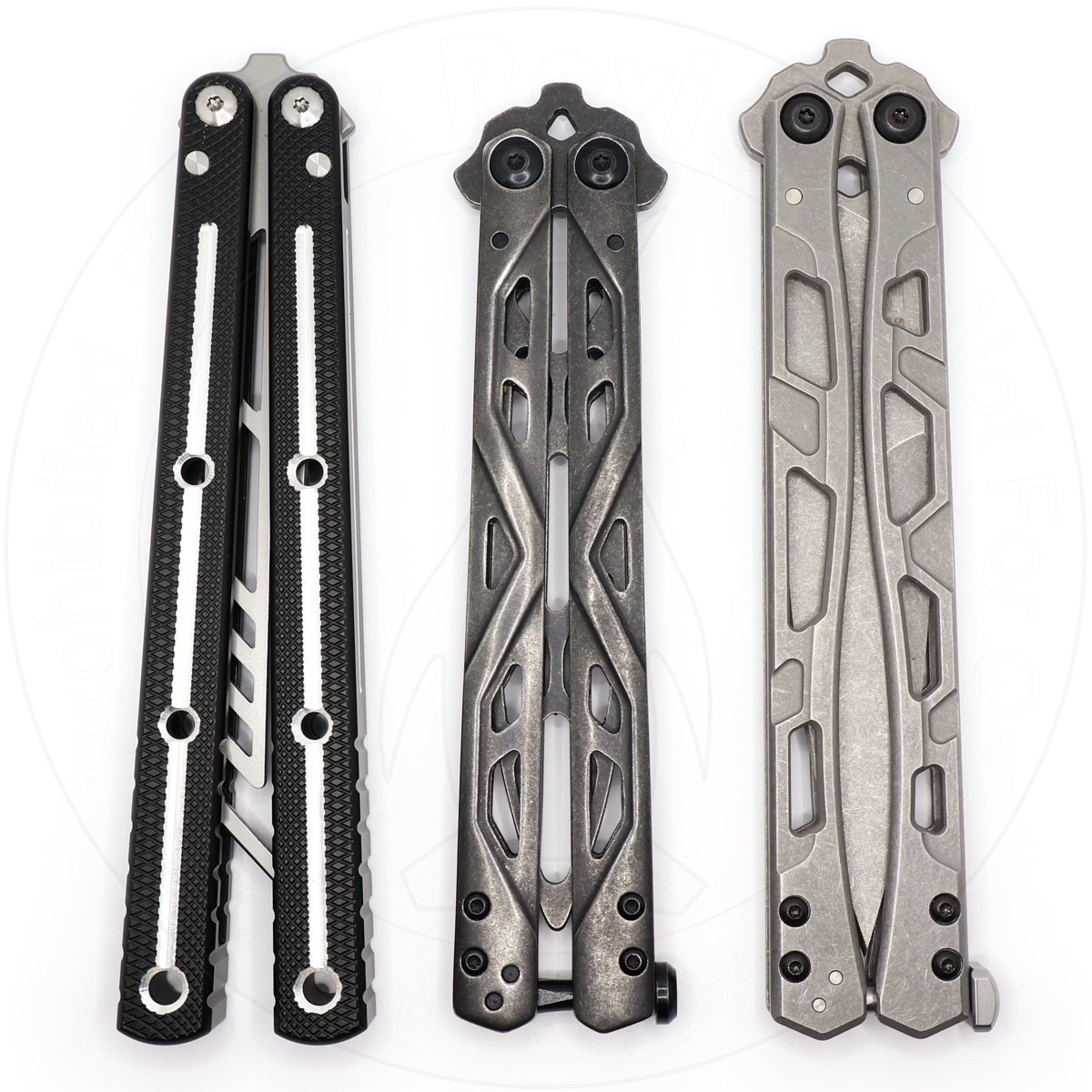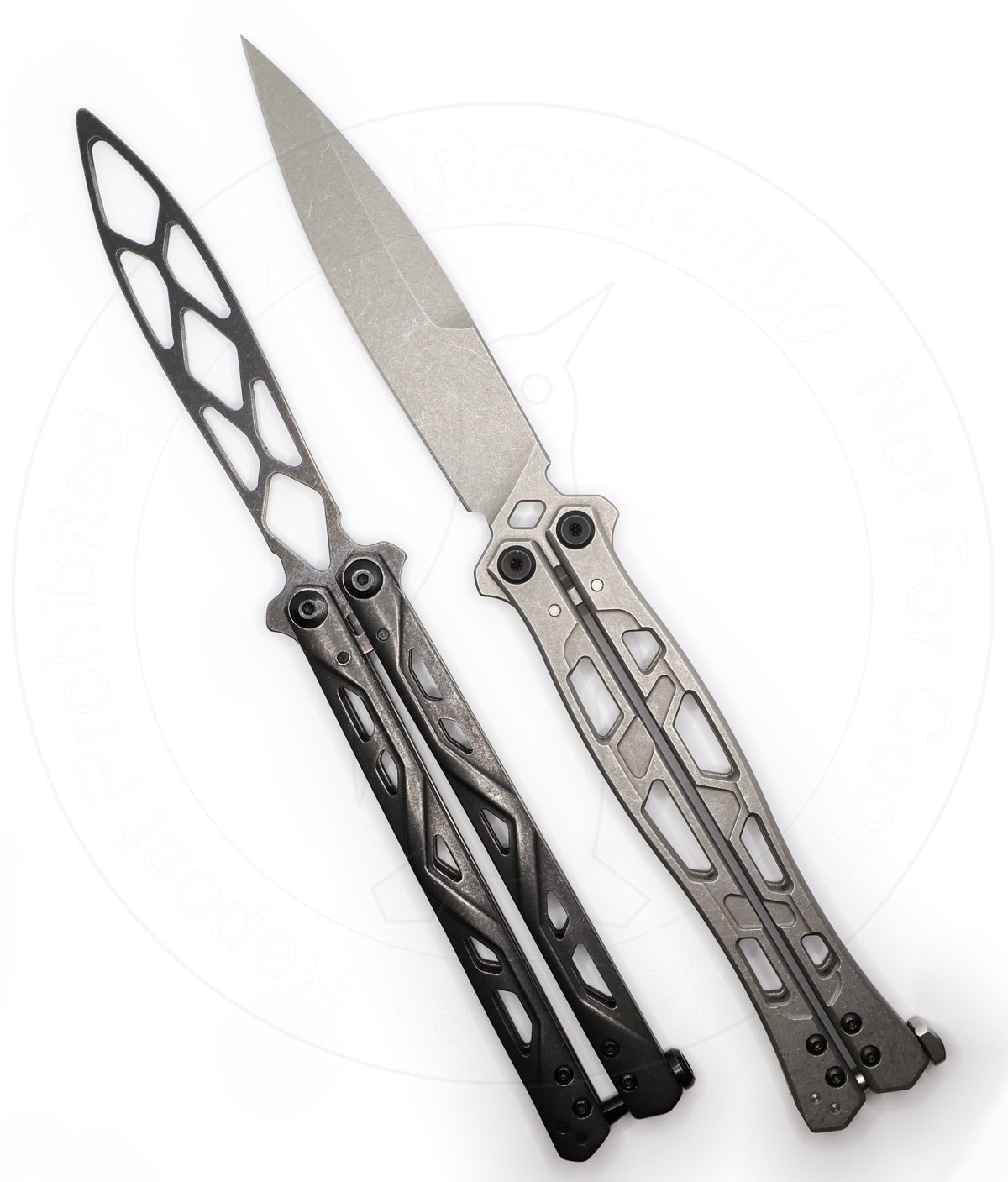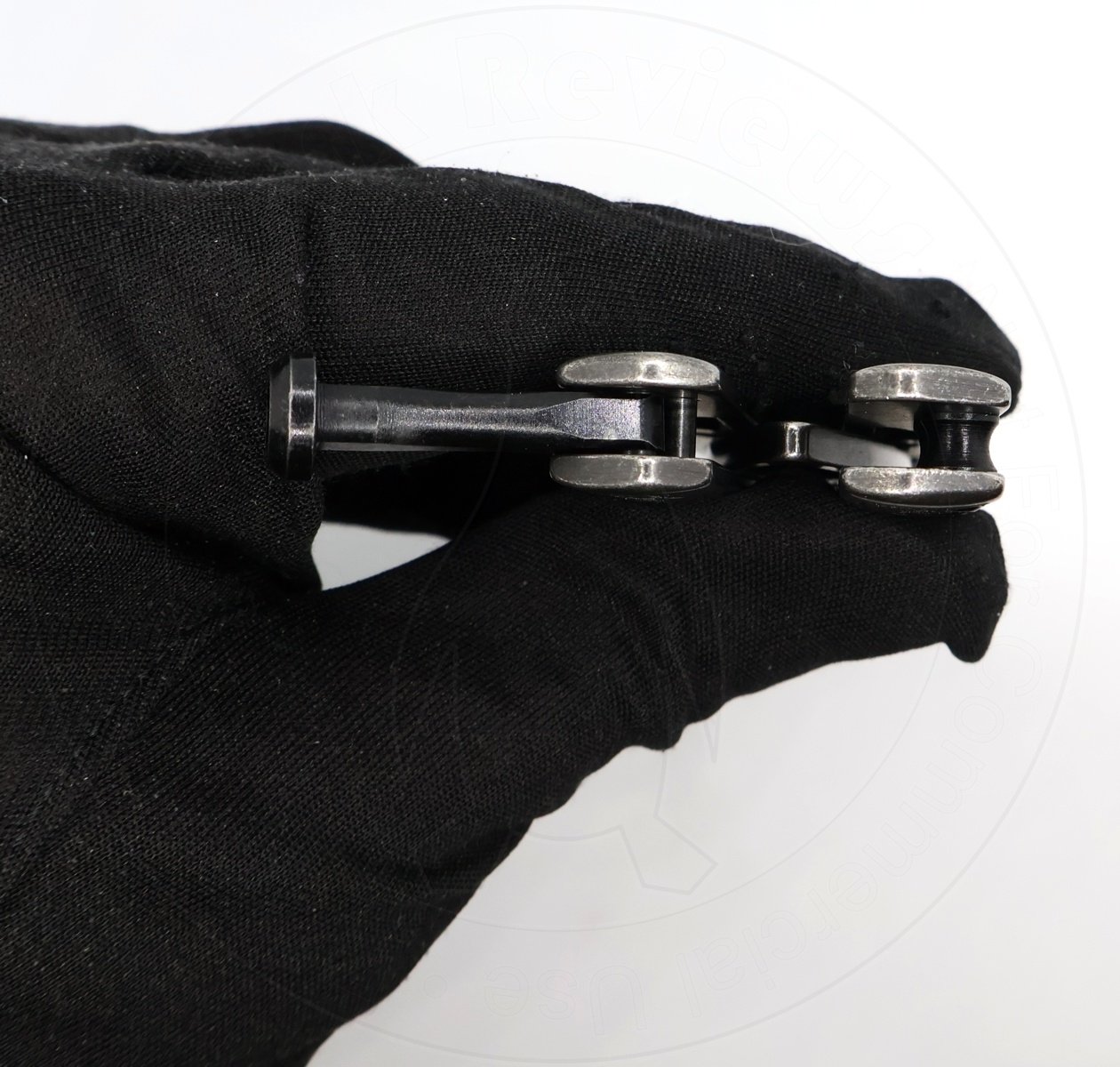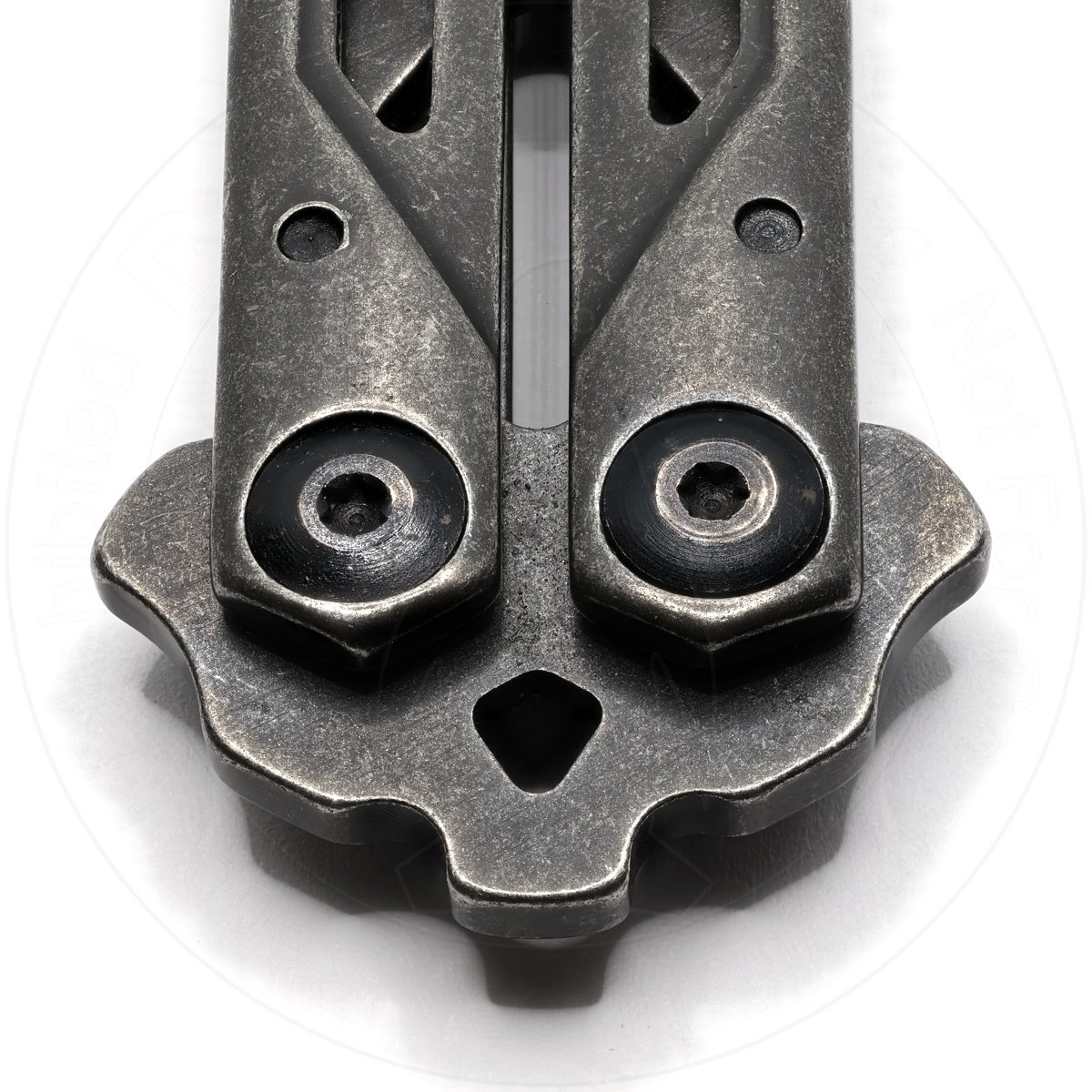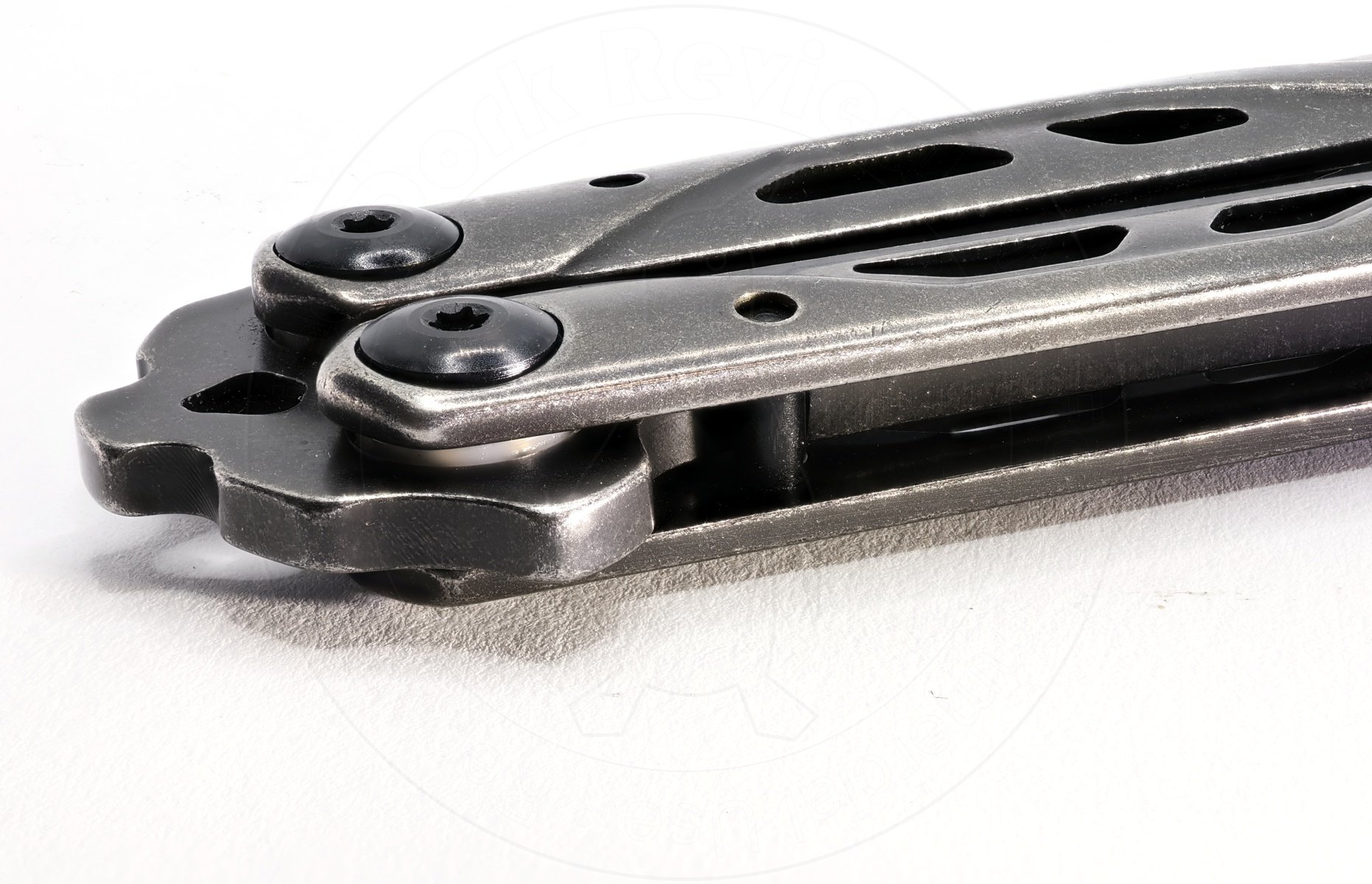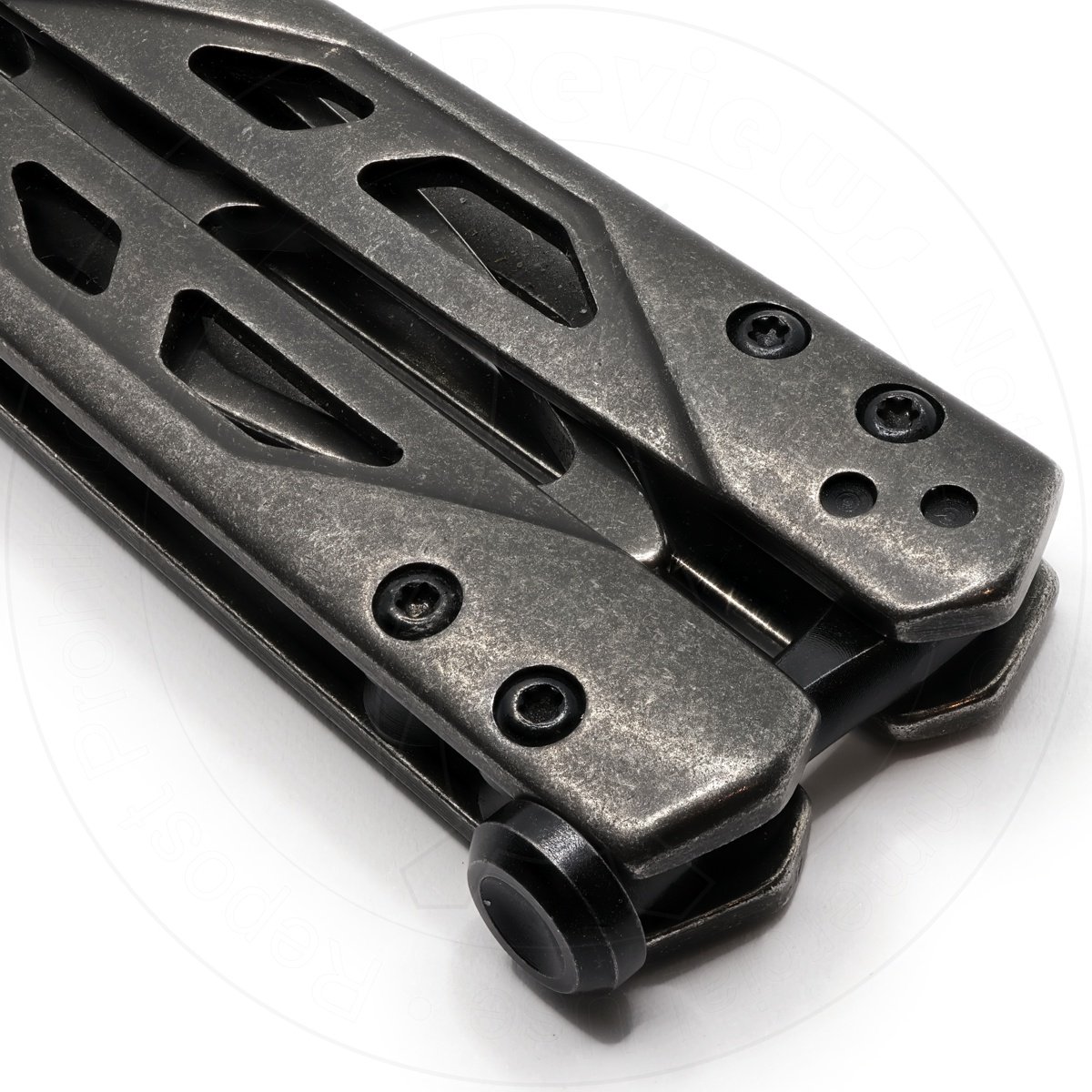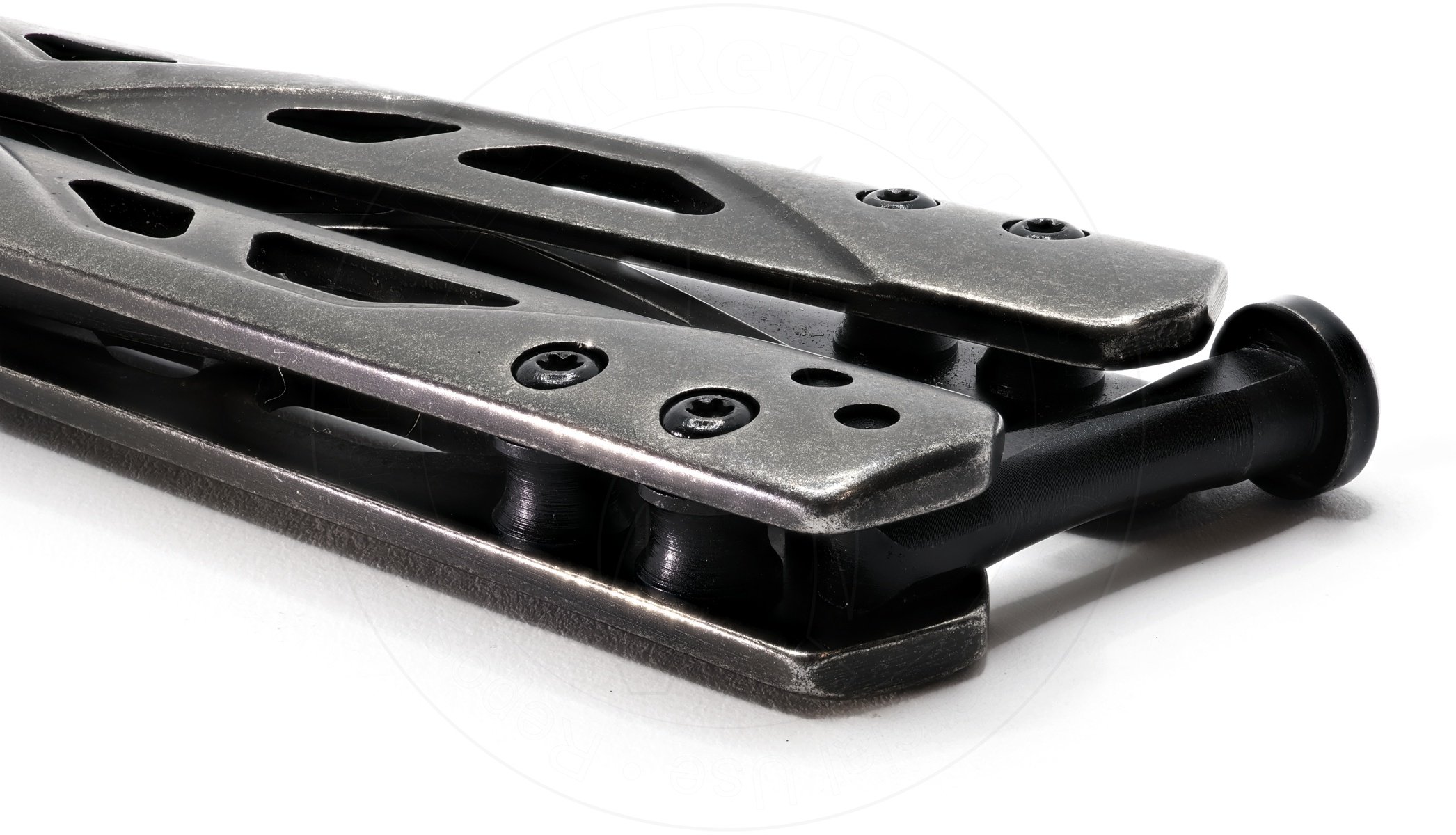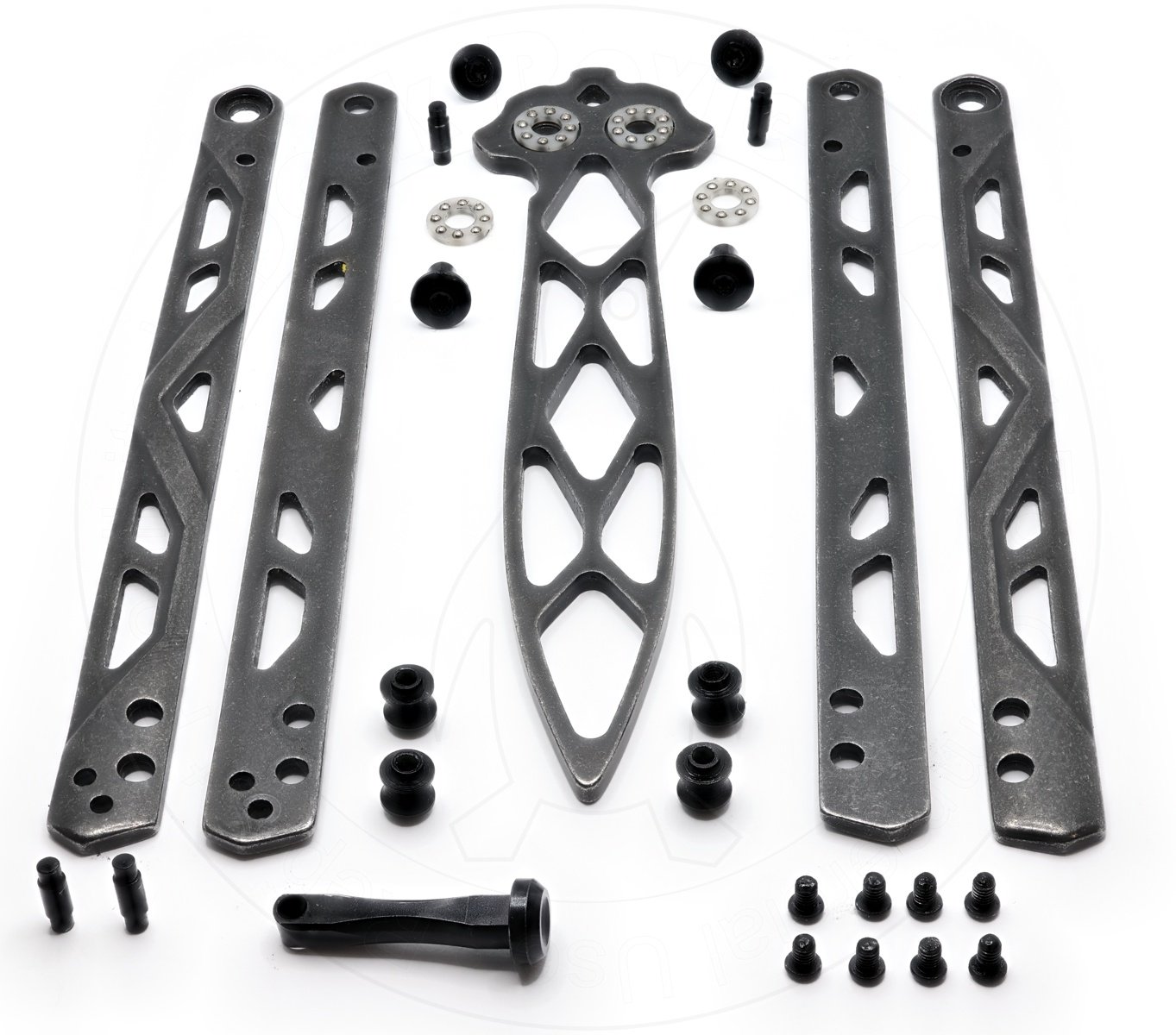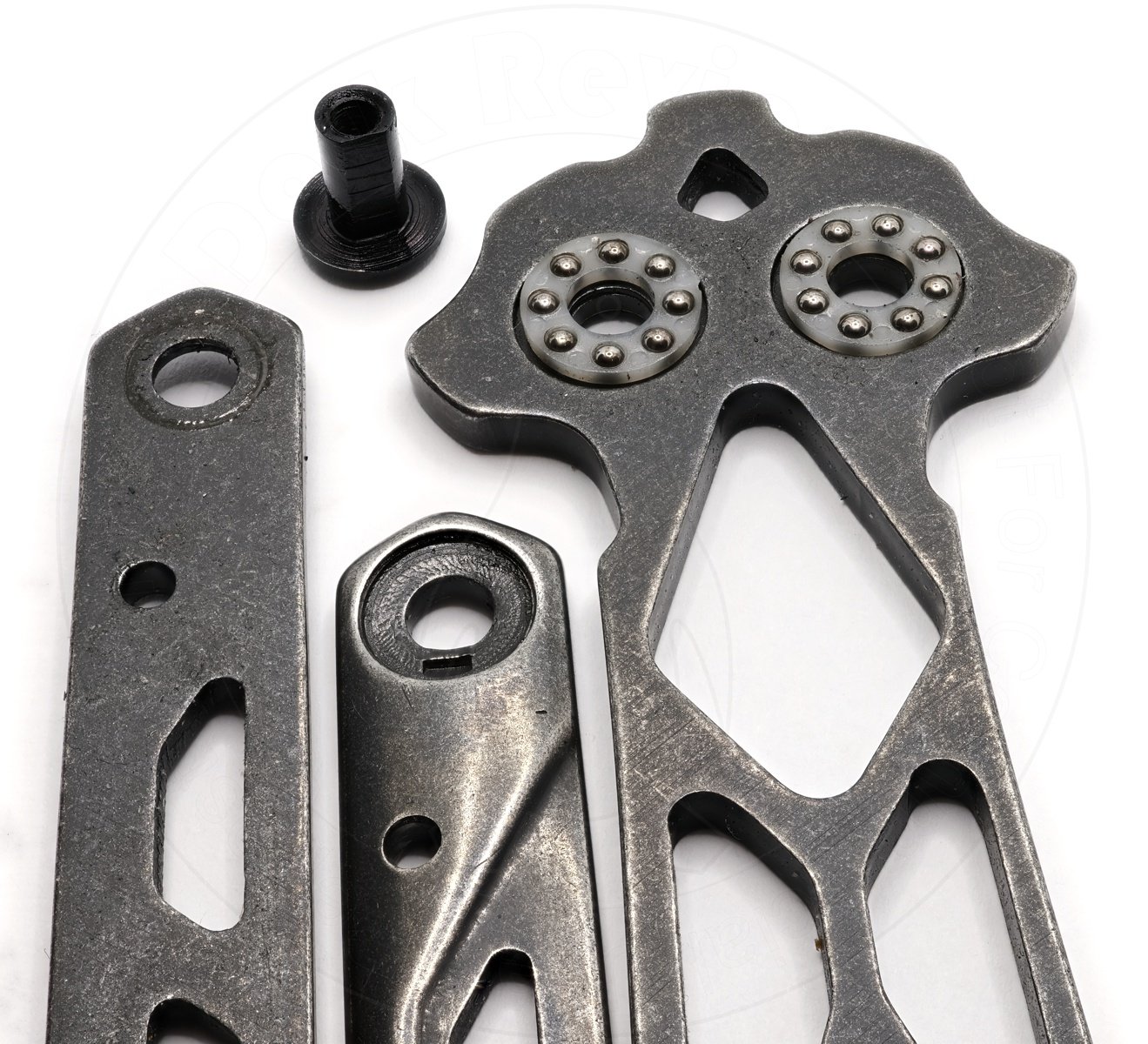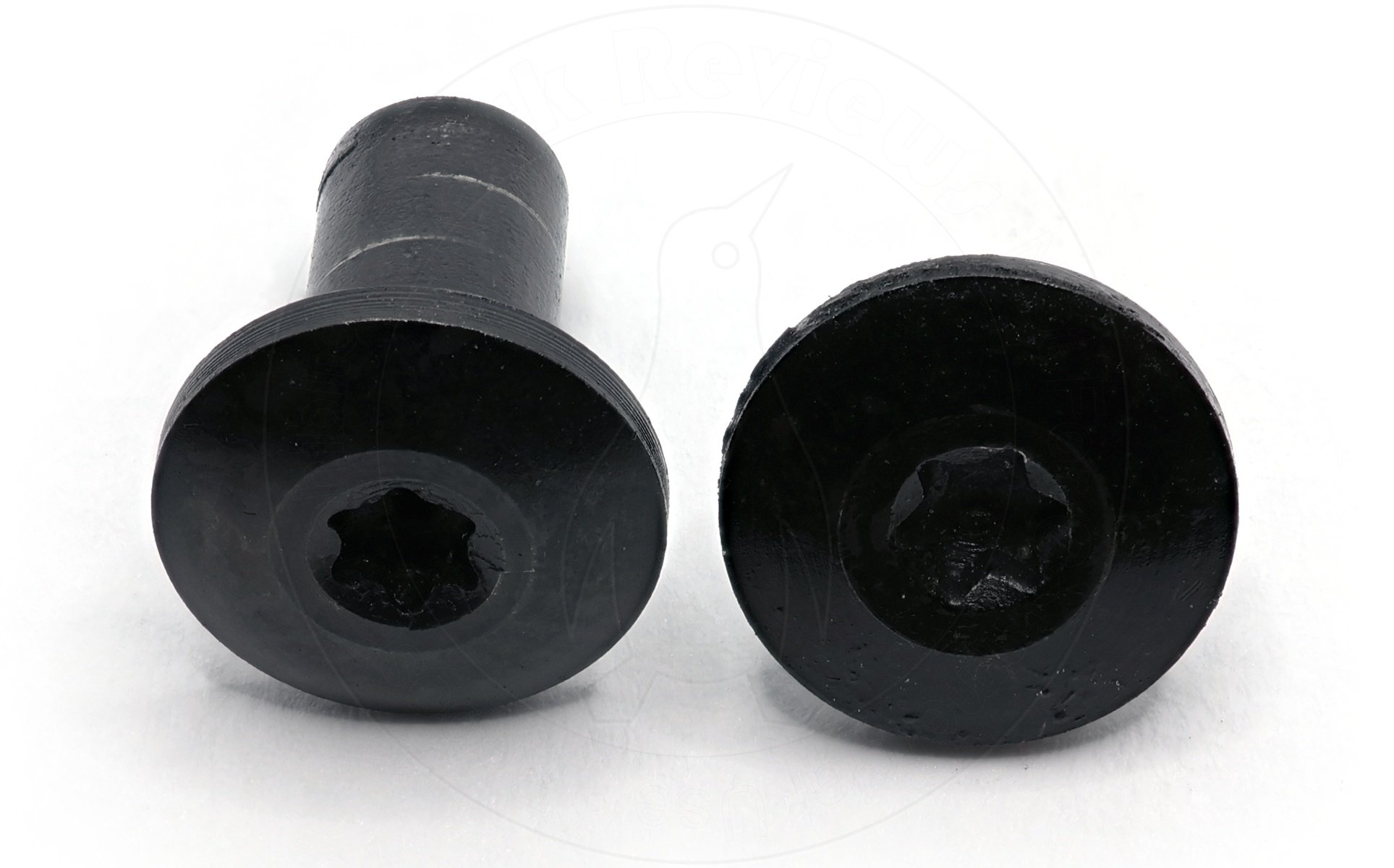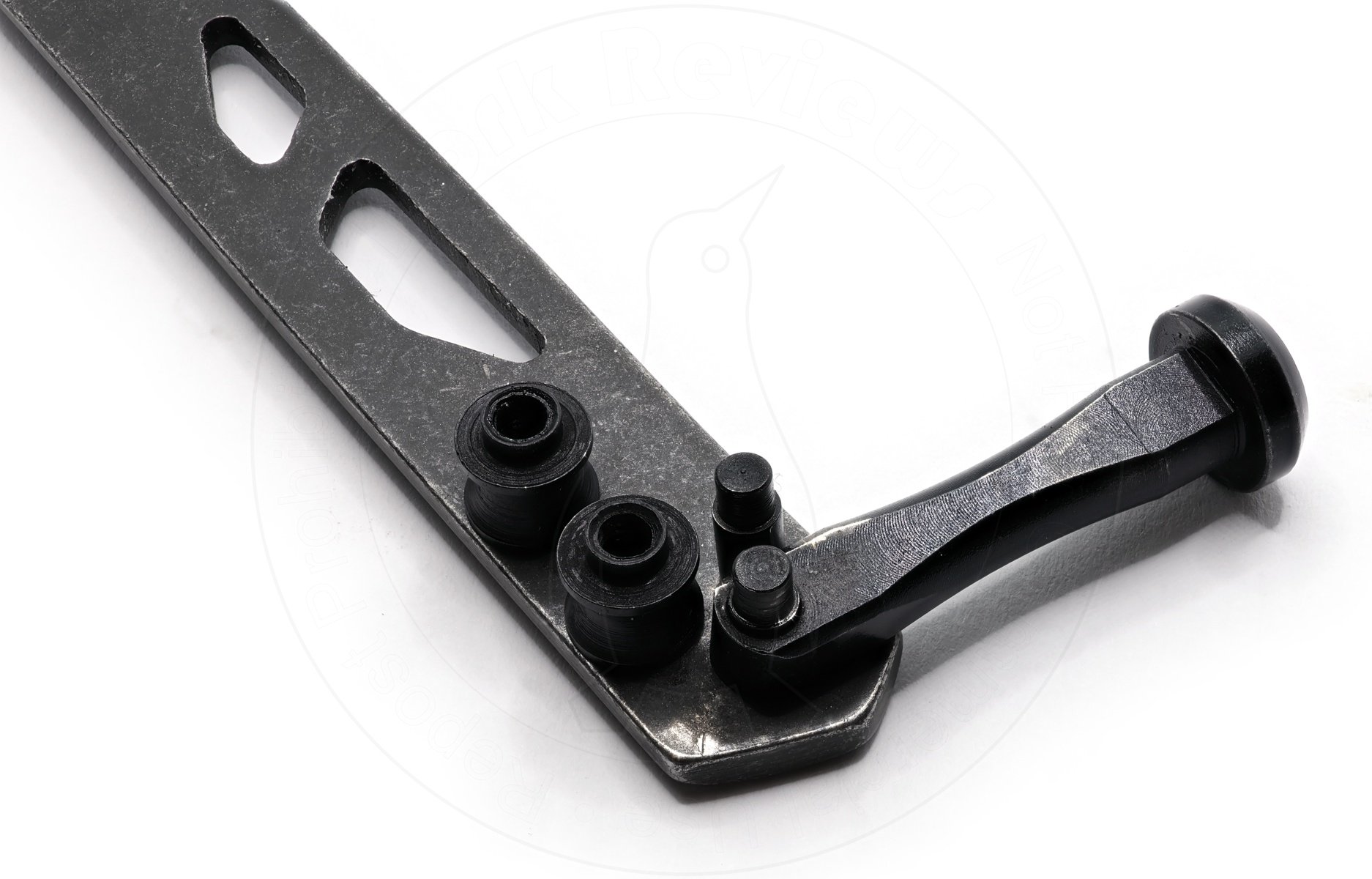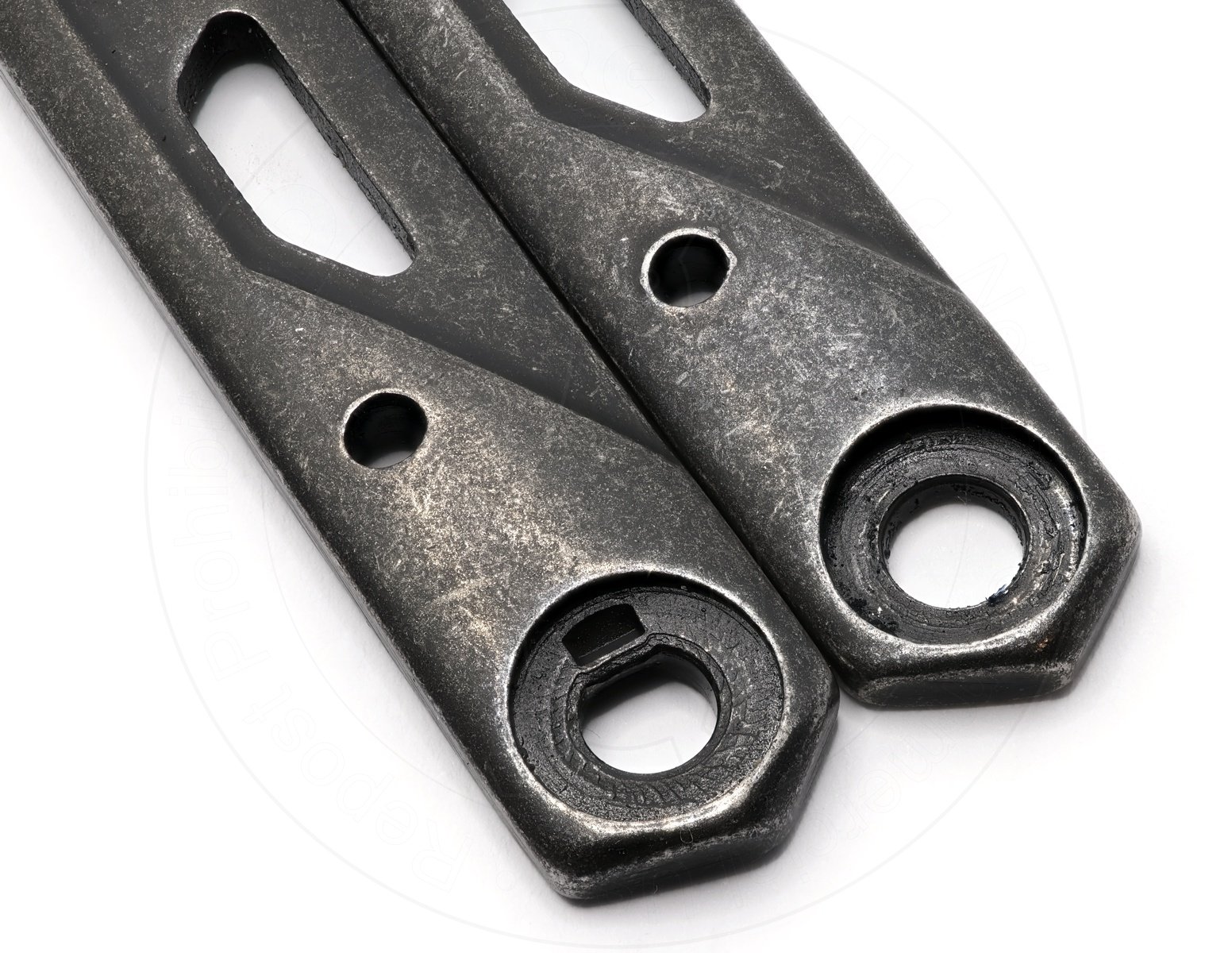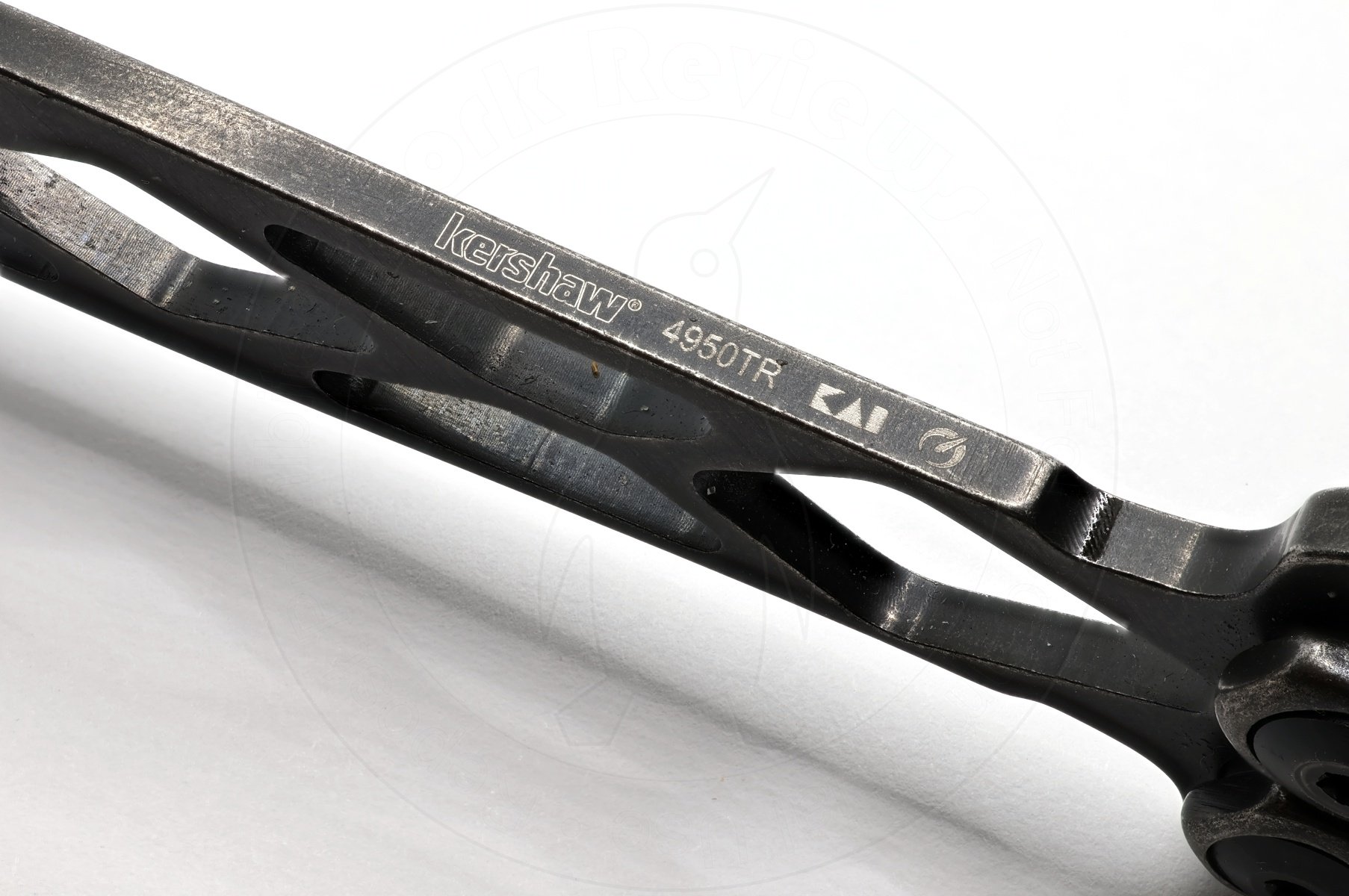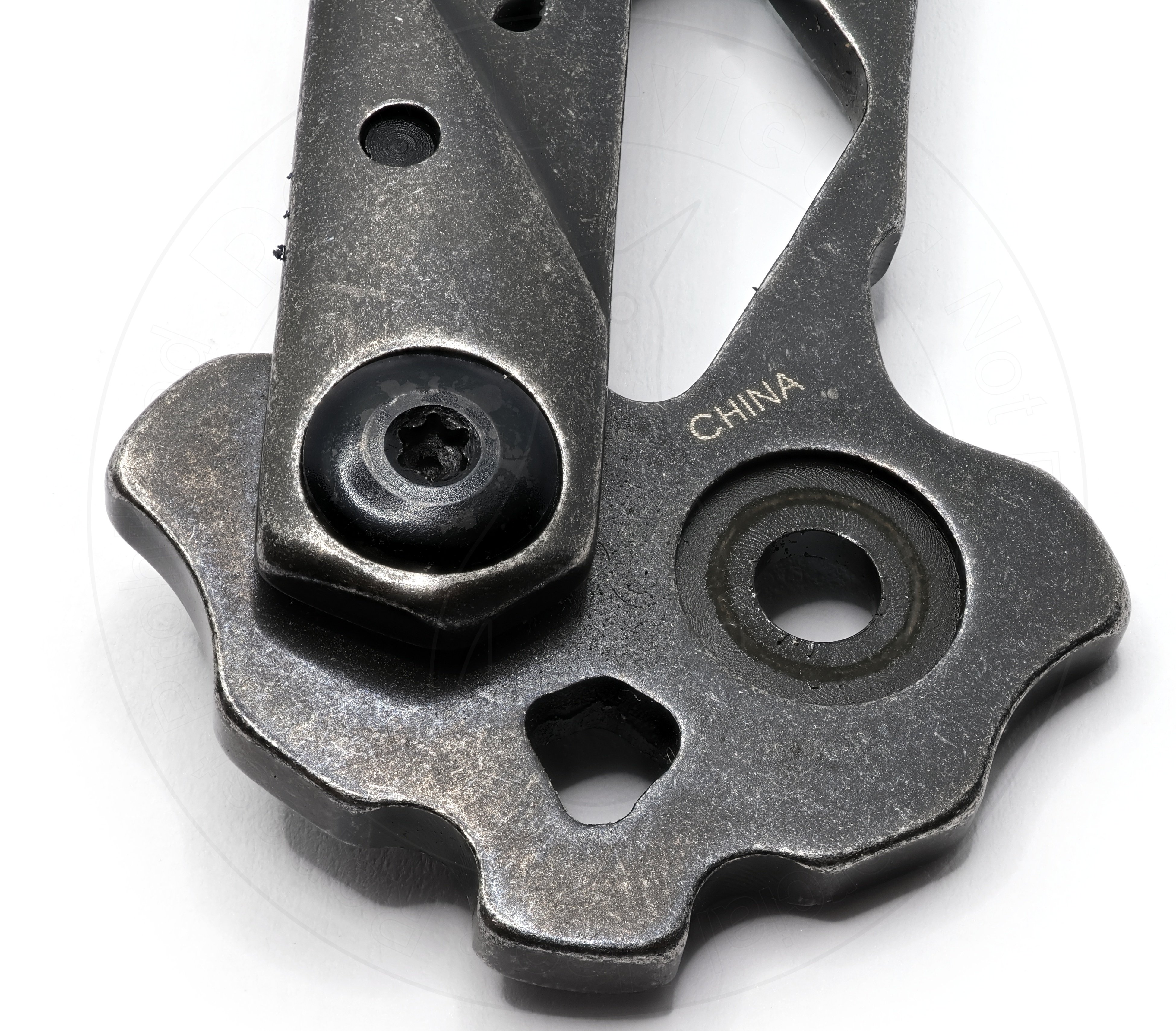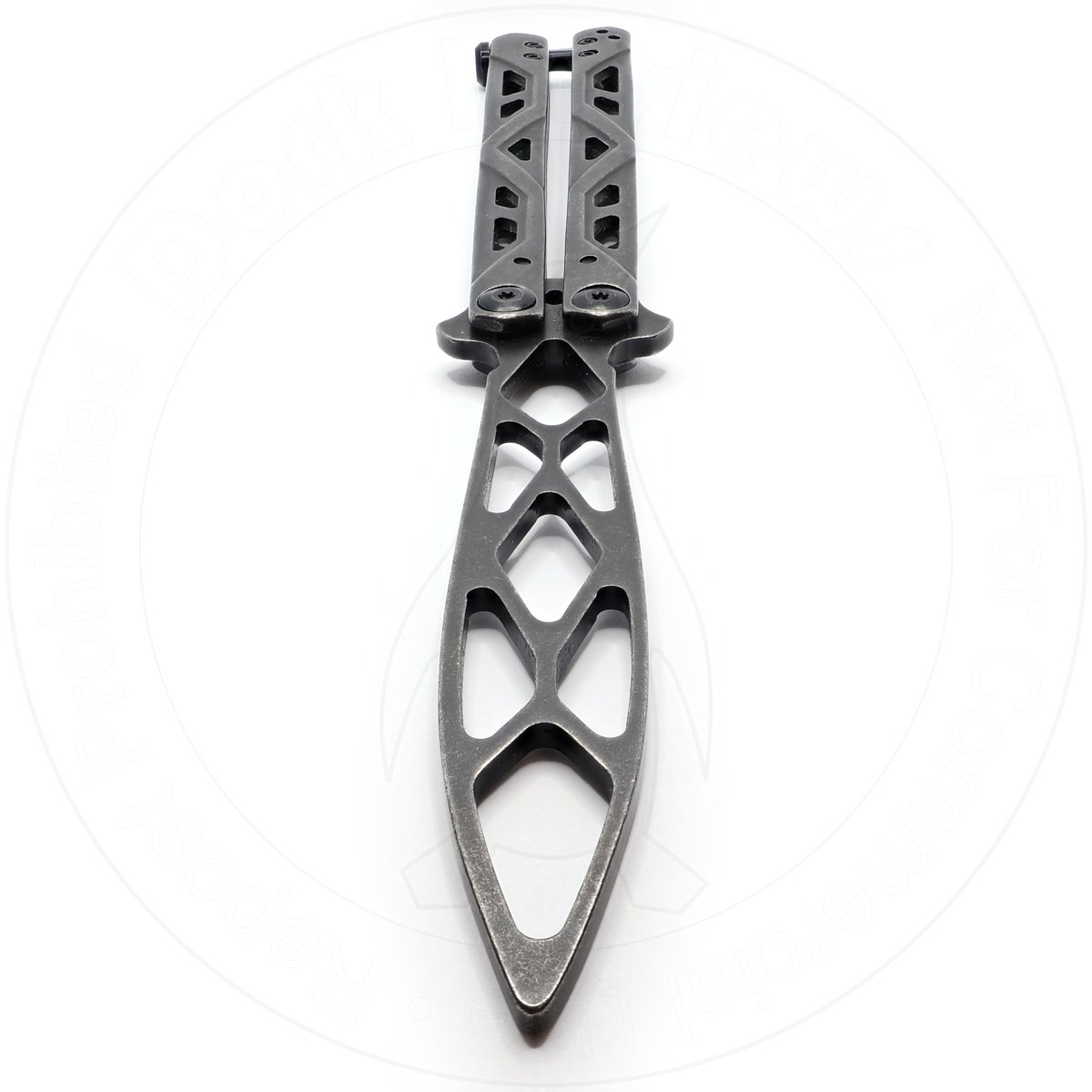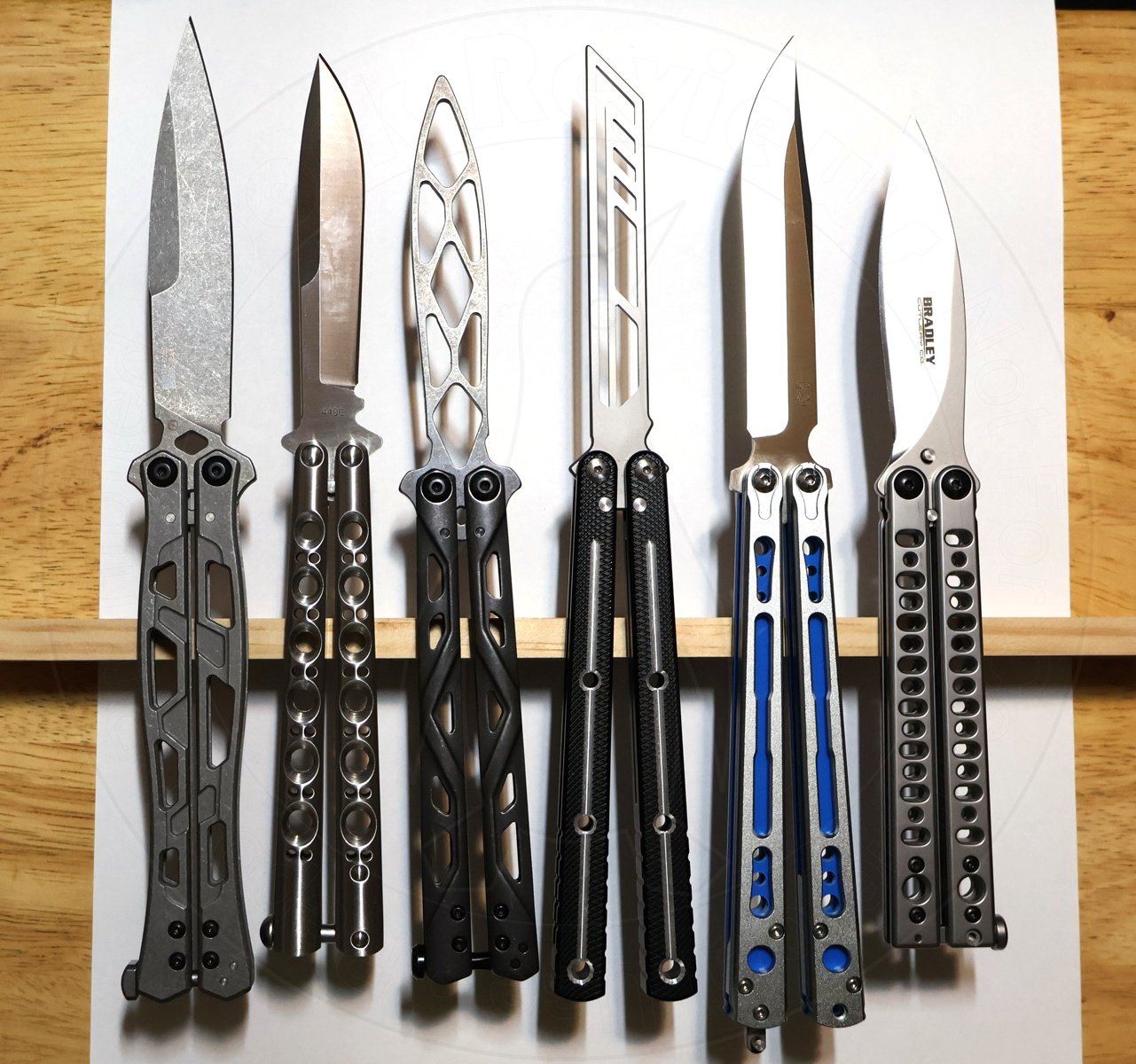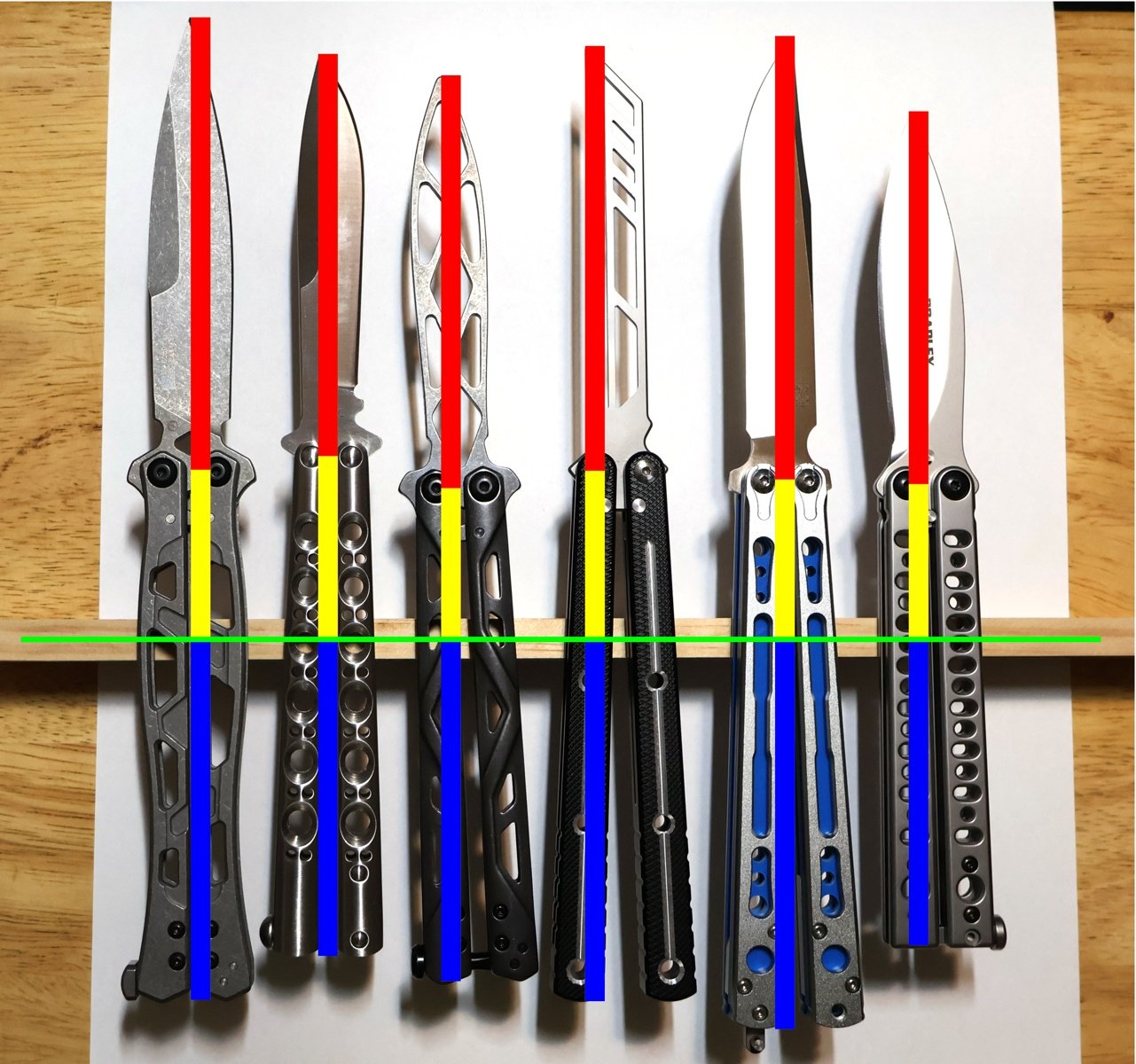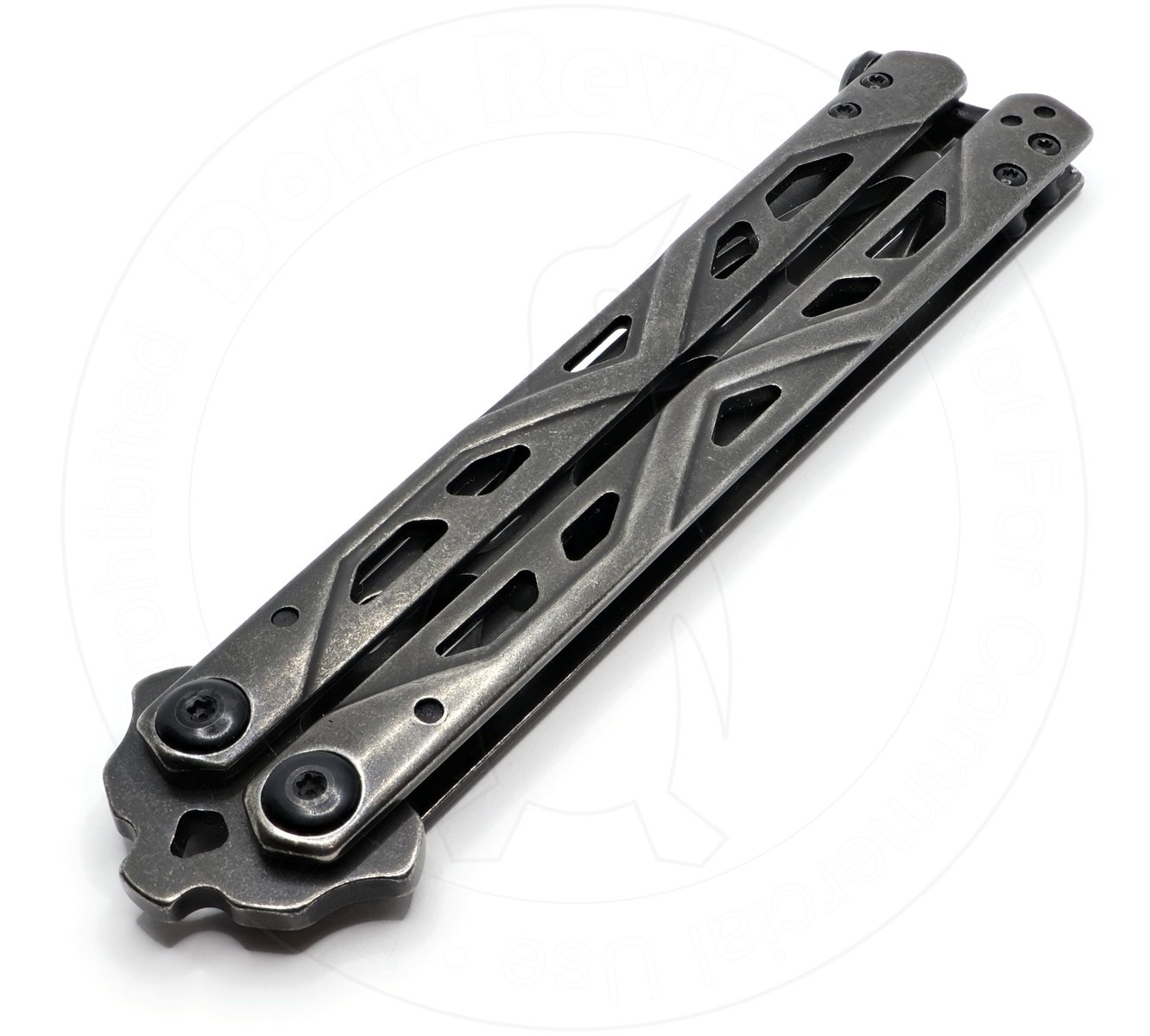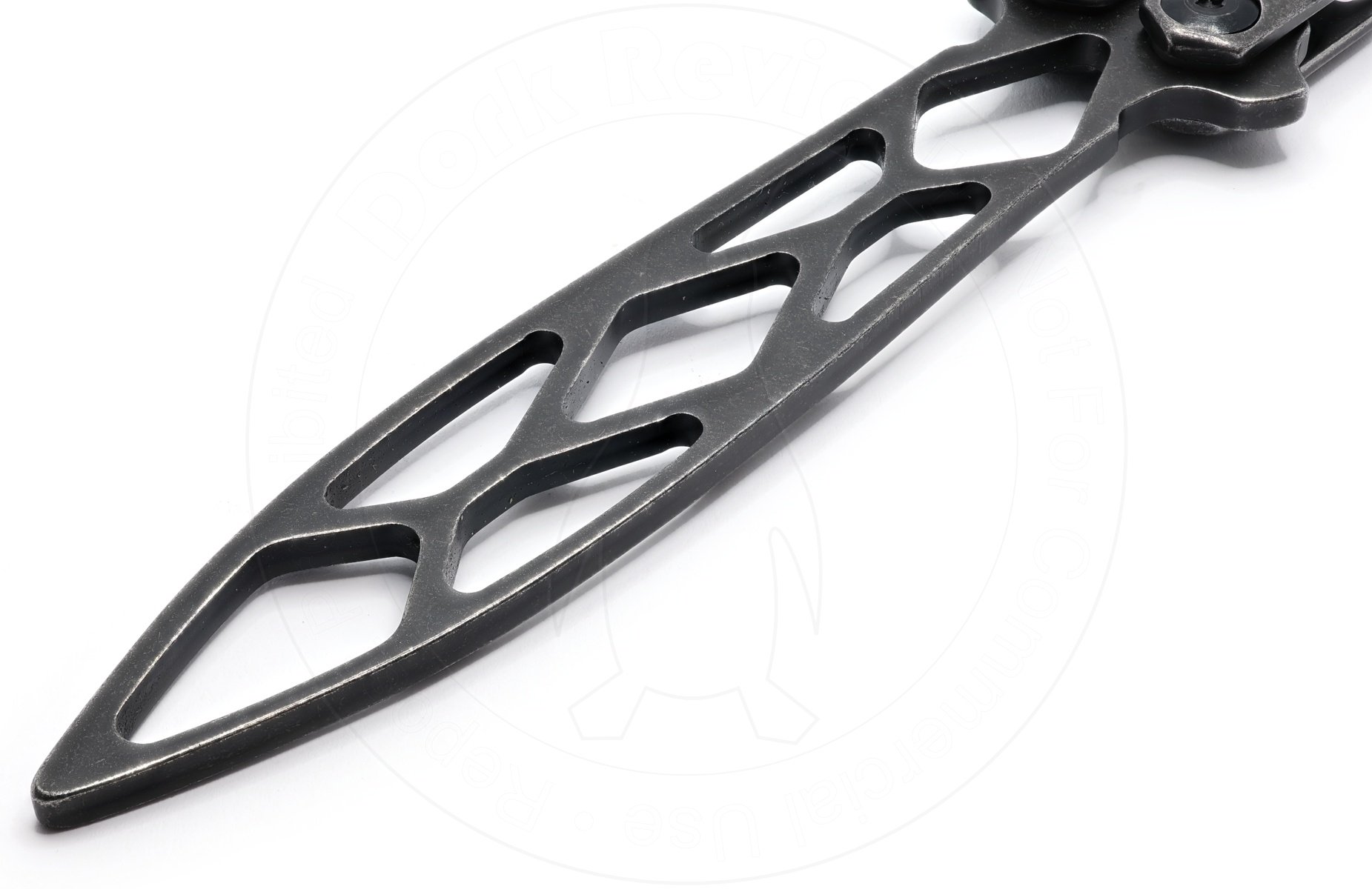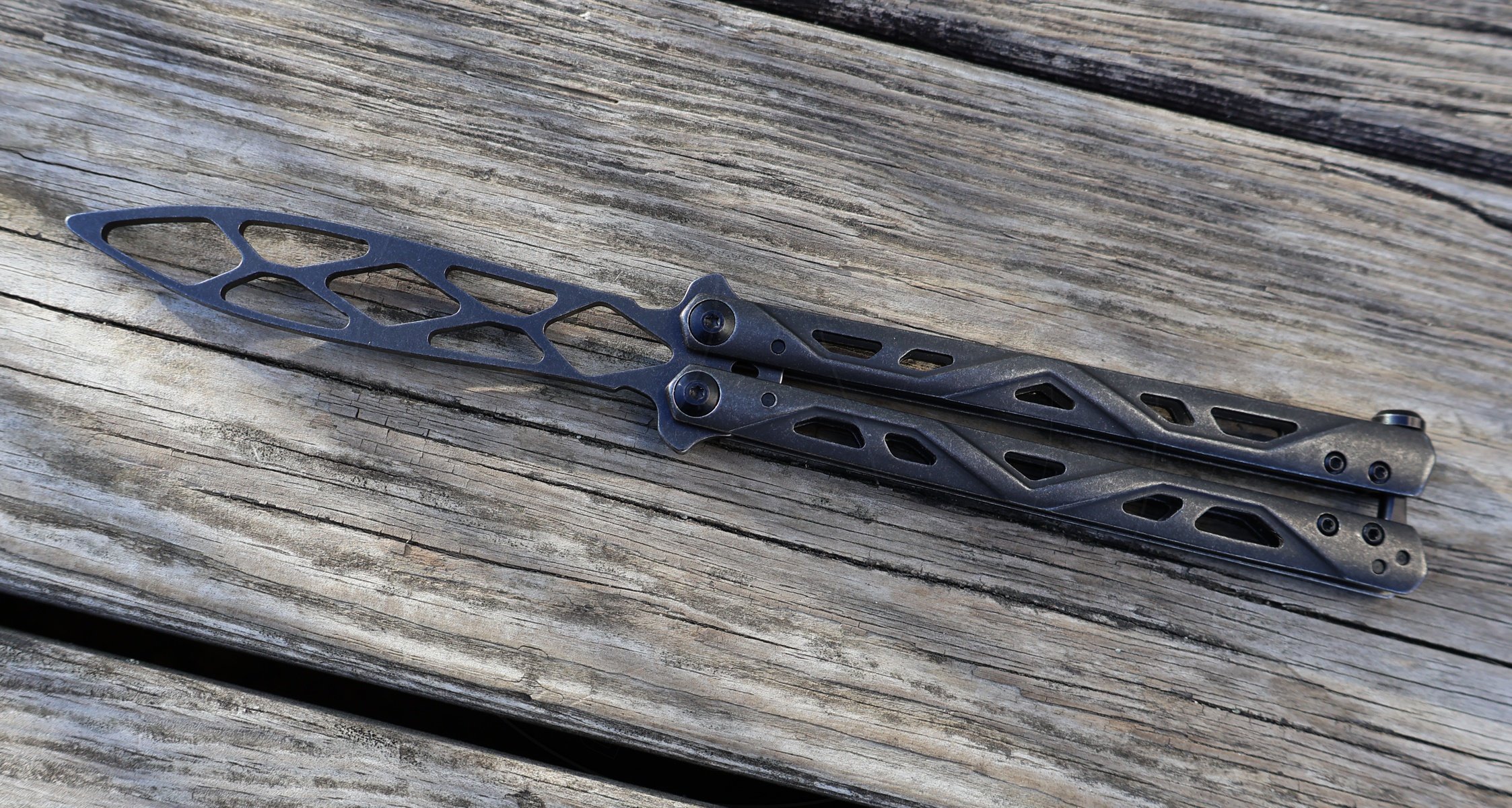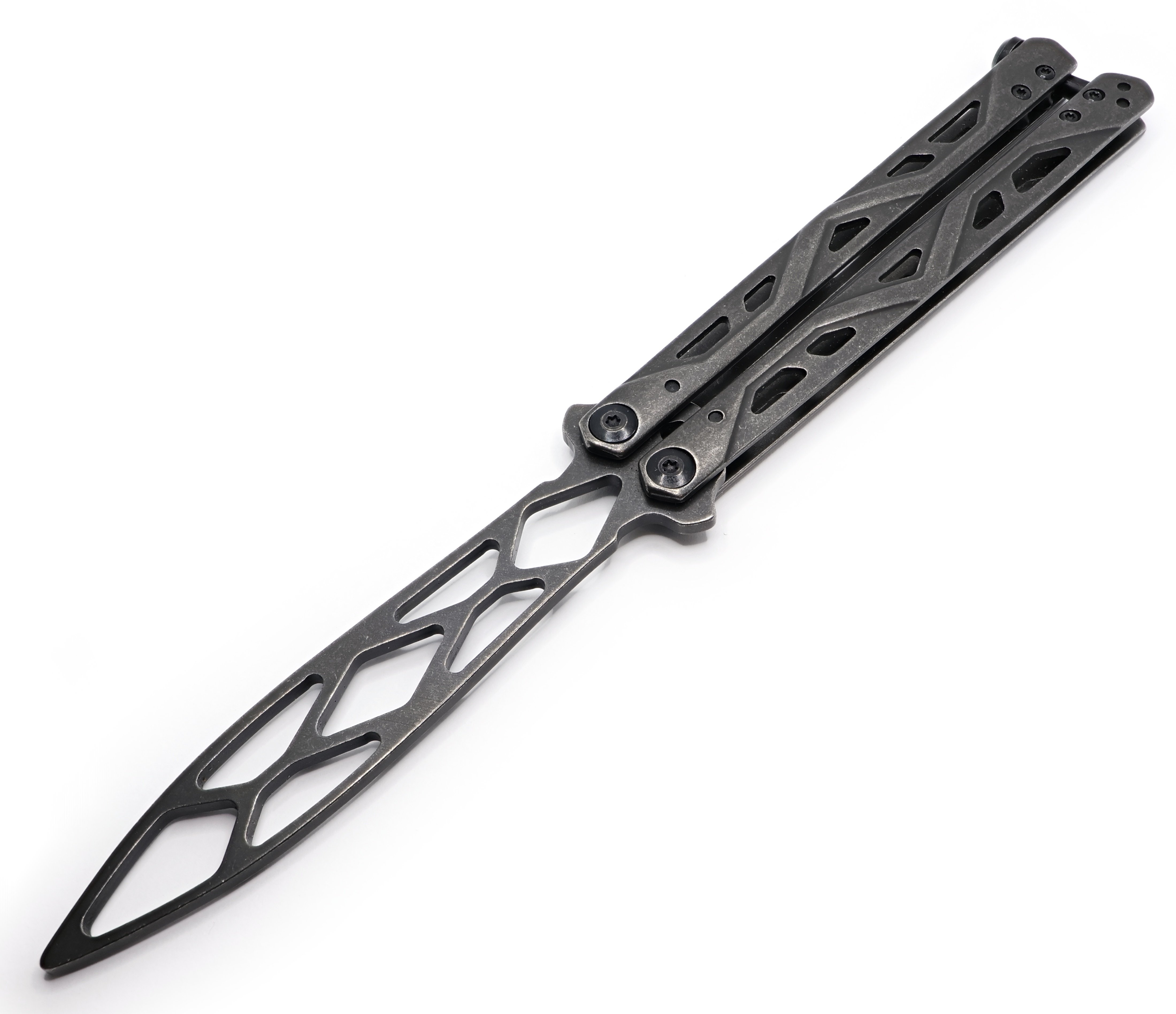Here, as you can see, I have a Spyderco Para 3.

"Clearly that's two of them," you say. "We all knew you were an idiot, but surely you can count to two."
Ah, but you see, it isn't. That's because one of them's a fake.
A forgery, a fraud, a simulacrum, a sham, a fraud, a phony, and a knockoff.
The truly astute among you — or the sufficiently learned geeks of the correct stripe — will probably already be able to spot which one it is. But any unordained member of the unwashed masses would probably be unable to tell, and that's one hell of a thing.
Thus, I present to you my first entry in what I plan to make a new and recurring if sporadic feature...
Send In The Clones!
This all started innocently enough.
I was noodling around on Aliexpress looking for more dumb shit to waste my money on. I'm sure you know exactly how it is. I chanced to scroll by this very image, and immediately it caught my eye:

Your really have to be an advanced nerd for this kind of thing to excite you, but I damn well know a Spyderco compression lock when I see one. Even if it's only fifteen pixels' worth of a grainy thumbnail image. I was therefore pathologically obligated to score this thing from the "Fire-Heat Knife Maker Store," specifically because they were being extremely coy with the product images. All of them were deliberately vague. They very carefully refused to depict the signature Spyderco thumb hole, the top end of the pocket clip, or anything even resembling a full frontal shot of the knife. But they mentioned a particular Spyderco model numer, C223, about a zillion times in the product description. Not, notably, the word "Spyderco." Not even once.
So you know what's up. When you see that, you know you're in for one of either two things: An absolute flaming piece of shit which is nevertheless bound to be a deep well of hilarity, which we can milk for content; or what I was really hoping for, a top flight counterfeit the seller really doesn't want to get busted for listing. Which we can also milk for content. So I put down precisely $20.81, crossed my fingers, and waited for that slow boat from China.
I've got no affiliation with the aforementioned chumps other than deliberately letting them sucker me out of twenty one bucks, but if you're into this sort of thing they may be worth a look. As these things go, the listing for my particular knife has vanished without a trace you can't buy the same one anymore, or at least not from the same people. But they've got oodles of other fascinating dreck in their listings which are all to the very last item absolute counterfeits of other knives. At the time of writing their "C240" listing is still up, for instance, which is presumably a clone of the Spyderco Smock. Since one good theft deserves another, I've stolen the entirety of the product images for that listing (all four of them) and reposted them here, here, here, and here. But you can see what I mean. I say presumably because they're very keen not to show you what this thing actually looks like. But they're certainly ready to refer to its model number an awful lot. They know you know. A nod's as good as a wink, am I right? Say no more, say no more.
They've also got a counterfeit of the Mantis Gearhead, which is currently low-grade unobtanium but generated a lot of buzz when I posted about it back when. If you've ever fancied getting your hands on one of those but now can't, I can tell you at the very least that the original knife is basically built to the level of a middling Chinese knockoff to begin with, so a clone of it is unlikely to be much of a downgrade if it's even any at all. (Archived image here, in case that listing also evaporates at some point in the future. Which it probably will, about nine seconds after I posted this.)

I'll finally spoil the suspense. In these photos, and (almost) consistently throughout this column, the genuine article is the one on the left and the fake is the one on the right.
The tell, of course, is that Spyderco never did a carbon fiber handle version of the Para 3 like this. "Nerr, but you forgot about the Para 3 Sprint Run, didn't you?" No, but that one has textured carbon fiber scales, not smooth woven pattern ones. And it was S90V whereas this one claims to be S30V (but more on that in a moment, for sure). Flytanium made a set of aftermarket scales that look pretty similar to these, but not quite the same, and insofar as I'm aware no knife ever left Spyderco's factory looking quite like this one.
Other options were available that may have looked even closer to the real deal. But let's face it, the carbon fiber is cool.

But what's not cool is this entire concept. Or rather, the looming possibility that any knife you might buy from a random online storefront expecting it to be a genuine Spyderco could very well wind up being one of these, and without something to compare it to or a thorough familiarity with the genuine article it's pretty much guaranteed that your average buyer would be totally fooled.
I've touched on this sort of thing somewhat obliquely before, and don't get me wrong — I enjoy a good Chinese knockoff myself. Probably moreso than most, or maybe just moreso than is healthy for a normal person. But I'm bent enough that this kind of thing amuses me to no end, so I seek them out on purpose just for the thrill of the chase.
The "C223" is the absolute spitting image of the Para 3. Not just the shape and the design, nor even the cross-compatibility of many of the parts. But the markings, the trademarks, all of it.

These chumps even copied the packaging. It's uncanny. If a bloke down the pub handed you this in exchange for $50 you might think you got a deal if you didn't know any better, especially given that right now a genuine Para 3 is every bit of $250. But this isn't worth $250. It's worth about $20, even new in the box. There are minute differences here and there if you know where to look, but that's the thing. You'd already have to know. Subtle inaccuracies creep up here and there, like small differences in sizes of text and terminology. The real box reads "USA MADE," for instance, whereas the counterfeit says "MADE IN USA." The UPC is the same, though, as is the alleged model number.

The presentation inside is much the same. Oh, except that the real thing comes with a Spyderco sticker inside the box but the counterfeiters were too cheap to include one of those, despite the fact that it couldn't possibly have been much of a tall order. Oh well.
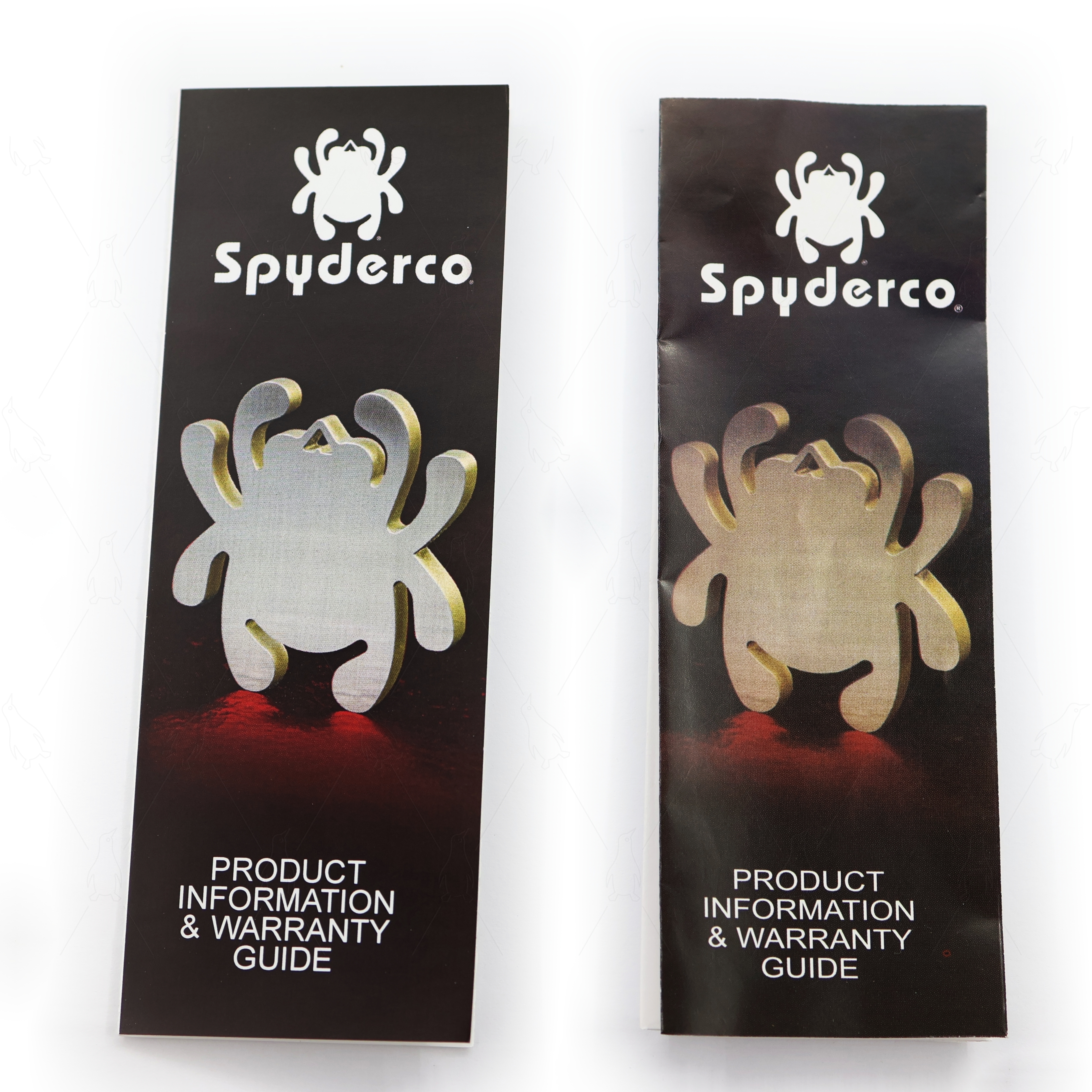
But, whoever made this did have the chutzpah to fully copy the manual. That's good for a laugh, because not only does it reproduce the text from the real thing nearly verbatim, but it even includes the contact and warranty claim information for the actual Spyderco company. Yeah, no problem, mate! If you have a problem with your fake knockoff knife, just send it to Spyderco and we're sure they'll cover it.
Come to think of it, I wonder if anyone's ever tried. (Somebody over there probably has a whole desk drawer full of broken counterfeit knives people have sent them, and if they don't I'll bet you someone at Benchmade certainly does by now.)
The coloration is slightly different from one to the other as if they made this by making a color photocopy of it.

But I know they didn't, because I did notice one odd difference between the real and fake manuals. The genuine one is as usual on the left, and the fake on the right. For some reason they've mixed up the trademark and (R) symbols, nearly but also not quite completely reversing them relative to the real manual. I have no idea why this should be. Maybe the fakesters feel pathologically compelled to intentionally insert subtle telltale errors in their materials while they snicker at us behind our backs.

Here's what I can say about the clone, though. It doesn't just look like the business, it's actually extremely well built. If this weren't a cynical counterfeit it could stand on its own and be one heck of a deal.
For a start, I really like the carbon fiber scales.
Well, I say carbon fiber. I'm not convinced that they're not just "carbon fiber look," because they look like G-10 underneath. But the effect is well done, and catches the light correctly and everything. So despite that, or perhaps because of it, the clone is actually marginally heavier than the real knife. It's 97.8 grams or 3.45 ounces, versus 95.7 grams or 3.37 ounces. That difference may very well be down to the mass of the blade itself or some of the other componentry as well. I'm not obsessive enough to go around weighing all of the parts separately.

The real Spydero is laser engraved whereas the clone is just laser marked. This may be a cost-cutting thing. If you examine it closely you can see that the genuine knife has thinner and more defined markings that have some depth to them. And the more you stare at the alleged Spyderco logo on the clone the more wrong it looks. It also purports to be made of S30V which is not only deeply suspect but also out of date. Current retail Para 3's like mine are made out of S45VN, although Spyderco has made oodles of versions of the damn thing over the years out of all kinds of different steels. I'm sure this is much appreciated by the rest of sane society, because it keeps the true Spyderco fanatics off of the streets and out of trouble by way of giving them something to do in cataloging them all.

The back sides of the blades are much the same story. The clone still claims to be made in Golden, Colorado which is of course categorically false.
The "C223" clone has a fine satin machined finish on the blade surface and is genuinely fully flat ground, but its finish is visibly coarser than the real thing. It's not too dissimilar from the finish found on older Spyderco knives, which is to say it's not bad. But it's not as nice as its inspiration, and it might be one way to identify a fake if you're holding one.
There's not much sense in comparing the rest of the measures because they're literally exactly the same, nearly down to the molecule. Blade length, 2-7/8", with 2-5/8" of usable edge. Overall length, 7-1/8" open, 4-3/16" closed. Thickness without clips, 0.445" on one and 0.446" on the other. The Para 3 is kind of the compact version of the Spyderco Paramilitary 2 (or sometimes rendered"Para Military 2," with a space). This is in keeping with the usual tradition of complete inconsistency with knife makers not being able to decide if models with higher numbers should be bigger or smaller than their lower numbered brethren. I picked the "C223" deliberately, because I do own a Para 3 to compare with but I don't have a Paramilitary 2. I don't have the 2 because I already own yet another knockoff of it, which is the previously mentioned Ganzo G729. I'm perfectly happy with the Ganzo for what it is and don't need another $265 hole in my pocket, but thanks all the same.

Spyderco must be very proud of their Compression Lock given how they like to rattle on about it in all of their literature. It amounts to basically just a liner lock, but positioned on the spine of the knife rather than the inner edge of the handle. Much noise is made about how this is safer than a traditional lock which has a grain of truth to it, since no part of your fingers needs to be between the edge and the handle at any point while you're manipulating it.
It's faithfully reproduced here, of course, and works very well. Externally, at least, our fake knife seems mechanically impeccable with a precise and positive lockup without any rattle or wiggle in the blade.
Because of where it's positioned, the Compression Lock also lets you perform a silly trick wherein you can hold it open and flick the blade in and out without having to touch it, rather like doing the Axis Flick thing with a Benchmade.

You can use this to open the knife without putting your fingers on the blade if that's an important feature for you for whatever reason, but more prosaically you can use it to convert your knife into a fidget toy and drive your colleagues bats with it whenever they're within earshot. Anyway, you would theoretically be able to do this with a normal liner locker, too, if it weren't for the pesky fact that the blade is in the way.
The jimping on the back of the blade is even 100% faithfully reproduced, with an indistinguishable level of sharpness and precision from the real thing including the number of spines. 13 in all. And yes, I counted them. And now you're counting them too, to see if I'm right. I know you are. (The jimping in the liners, though, has one extra spine. But that makes it superior, right? More is more than less. Obviously.)

Among the various parts on these that are mechanically interchangeable, we can include the clips. The hole spacing is the same and you can swap these back and forth if you feel like it, which maybe is no big surprise since the Chinese have been cranking out compatible aftermarket clips for various Spydercos and Benchmades forever. It's even engraved — really engraved, this time — with a logo. I didn't say "the" logo, though, because just as before it's still slightly wrong.

The blade centering is great, too. That's usually one of the places where cheap knives fall down. The one above is the clone. For comparison, here's the real one:

It turns out there's a good reason for that, and now that I've said so you may have already guessed what it is.
The Gubbins
You know full well I can't just leave it at that without taking this thing apart. So I did, and while I was at it I disassembled my Para 3 for comparison. That's part of why it took me so damn long to produce this, and the other part you'll see below. Both of these knives are of course incredibly similar on the outside, so since we're here let's see if they're similar on the inside, too.

Ostensibly it doesn't take much to get the Para 3 to give up the goods. This here is the real Spyderco, which uses their increasingly familiar (now that I've taken a total of two of them apart and documented them here) shouldered barrel pivot with captive bronze washers. Precision machine work is kind of Spyderco's stock and trade, and this layout is very reminiscent of the ones in the Smallfly 2 we looked at many, many, many moons ago.
Note also the semicircular track for the lock detent ball which is actually already machined in from the factory.
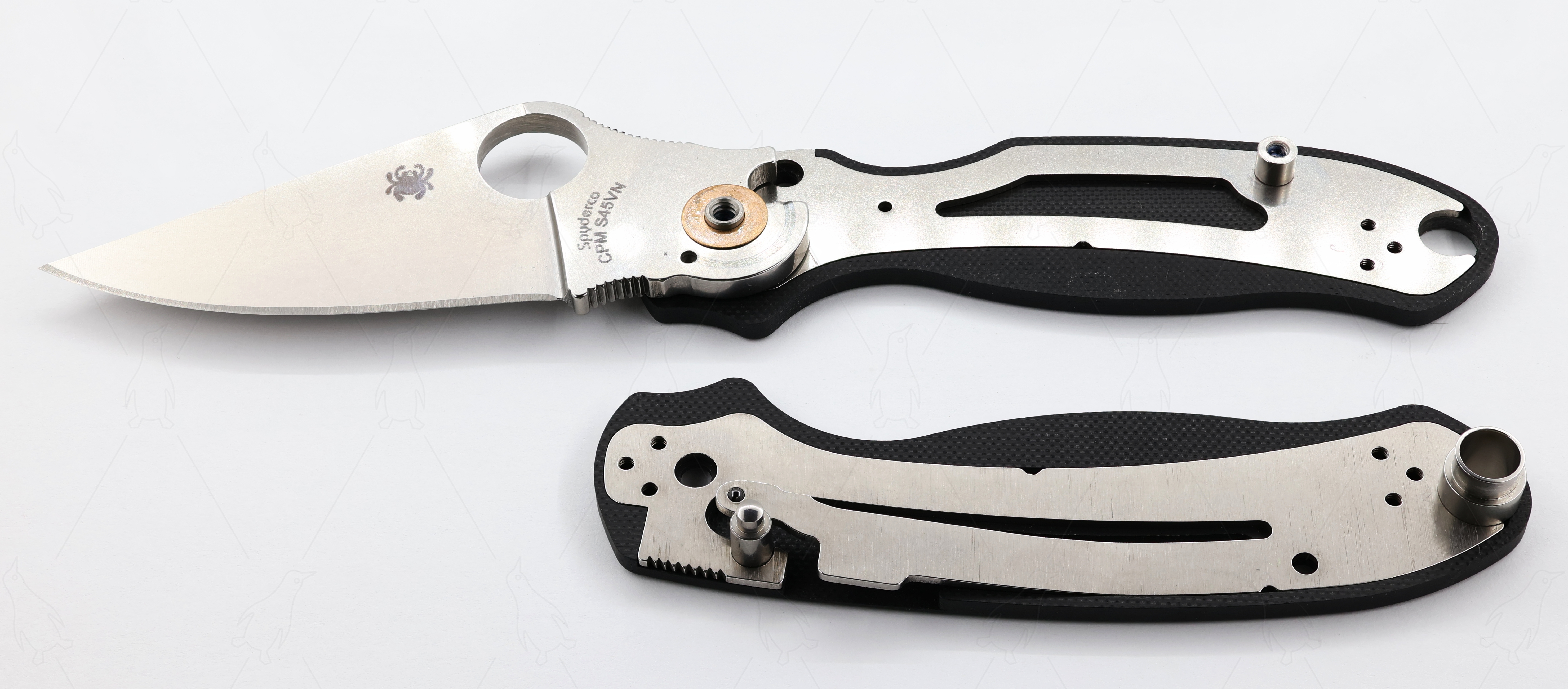
A superficial assumption might be that the Para 3 is one of those jobbies that's mostly made up of its scales, and that it doesn't have full length liners. It actually does, but they're concealed by being inset into the scales.

Despite Spyderco's insistence on the matter, the Compression Lock really is just a liner lock but backwards. It works the same way with the same types of components, in this case including a normal endstop pin which passes through both liners and is also visible peeking out of holes drilled in the scales. Because it's a Very Nice Knife, and bloody well should be for its price, the Para 3 includes a ceramic rather than steel detent ball in the lock.

All of the press fit components in the Para 3 have very close tolerances, and lock together firmly enough that you may think at first blush there's more than just the two screws holding it together. The pivot barrel press fits into the liners, for instance, and holds the washer on whichever side you didn't dismantle captive.

That theme continues with the lanyard hole backspacer tube thingy on the tail of the knife which is an extremely tight fit in not only the liners but also the scales, and takes quite a bit of wiggling and rocking back and forth to coax it out. It sits flush with the outer surface of the scales which, if you were paying attention a couple of dozen paragraphs ago, the one in the clone knife actually doesn't.

Oh, and for some damn fool reason the pivot screws require a T9 Torx bit but the spacer screw heads are T8. I have no idea why this should be.
Apparently the clone makers had no idea why this should be, either, since in the case of the knockoff "C223" it isn't. All of the screws on that one are T8 heads.

It also has ball bearing pivots. I'll be damned.
And they're ceramic ones, no less.

To make up for this, the detent ball in its lock is plain steel. It also includes one spacer washer only on that side, I assume to take up the extra thickness from the detent ball itself. I'm pretty sure it only has one, anyway. I didn't find a second one on the carpet, and after carefully ensuring that the washer ended up back on the side it came from my example went right back together perfectly. So your guess is as good as mine on that one.

The pivot screw design between this and the genuine Para 3 are completely different. They look the same on the outside, but that's where the similarities end. The Para 3 uses that threaded barrel that actually has as screw driven into each end; which end comes out is probably pretty much random whenever you try to take it apart. The "C223" doesn't, and uses a traditional Chicago screw. It does have an anti-rotation flat on it, though, and for once in a knockoff knife the liners are correctly broached to take advantage of this.

The blade heel is different. It's pocketed to accept the ball bearings, and it lacks the zooty pre-machined track for the detent ball. That probably explains the need for the spacer washer, come to think of it. It's obviously be hand tuned for lock engagement with a grinder, because a burr and a small burn mark have been left on it. This is pretty normal for cheap Chinese cutlery.

Otherwise, it comes apart just like the genuine article. The press fit components aren't as tight and are easier to remove. I don't think that has much functional bearing on anything; all of that is just Spyderco showing off.

The full set of hardware.
It occurs to me that I forgot to take a similar picture of the Para 3's hardware, and I'll be blown if I'm taking it apart again just for that. You'll just have to deal with it, I suppose.
You can interchange the clips, spacers, and scales between both knives freely. The blades won't go, not because they're shaped especially differently from each other on the outside, but the pivot hole setups are totally different.
The Edges
I was keenly interested to see what the actual cutting performance of this clone would be.
You see, you see, that was a pun. I don't know if you noticed.
Anyway, I usually don't get too far into rambling on about the edge performance of whatever random novelty bullshit I'm showing off, because in a lot of cases the actual knife aspect of it is secondary. But this purports to be "A Spyderco," and since it hasn't got any major gimmicks up its sleeve a prospective buyer of it (whether they know it is a fake or, more likely, not) would probably actually expect to be able to cut stuff with it. Merely being glow in the dark and with a trick spring loaded ballistic corkscrew on it won't be enough to carry it through, here.
I'm pretty ill-equipped to quantify this sort of thing, to be honest with you. I keep all of my working knives very, very sharp with the aid of a variety of sharpening gadgets — some of which we may some day explore — but outside of superlatively bad examples it's hard to convey a knife's performance in text.

Therefore I got very scientific with this.

Here's the usual lousy micrograph of the clone's edge. I was not too surprised to see that it's got a secondary or, if you prefer, "micro" bevel on it. That sort of thing is often a shortcut to ensuring that any given hastily hand-ground budget knife actually manages to achieve an edge — rather than its two sides embarrassingly failing to meet in the middle, as sometimes happens — and can cover up a blade made of shitty steel or with a shitty heat treat from becoming obviously dull after minimal use. A steeper edge angle is more durable and will remain sharp longer than a shallow one, all other things being equal, at the expense of lesser cutting performance. And the whole point of fancy high edge retention steels is to be able to keep a shallower and thus more performant angle for longer. Or, indeed, at all.

The point's kind of a mess. The grind doesn't quite go out to the end of it, so the very tip is actually just barely noticeably blunt.

The edge grind is of course also noticeably out of true. That will have to be ground out the first time you sharpen it for real, unless you plan on doing as off-kilter of a job as the factory did.
All of this is completely to be expected and well within acceptable tolerances for a $20 knockoff knife. Regardless of all of the above, the "C223" is still objectively quite functionally sharp right from the very moment you remove it from its fake-as-a-snake box, and will effortlessly cleave a Post-It note in two, or open your mail, or cut rope, or flatten a cardboard box. I predict this is in no small part because even if the edge geometry has not been accurately cloned from its Spyderco inspiration, the blade geometry itself with its full flat grind has been, and this is one of the signature aspects that makes Spydercos if nothing else very consistent cutting performers.
Meanwhile, here's how the real deal does it:

Needless to say the genuine Para 3's edge grind is noticeably finer than its clone under magnification. I was surprised to see a micro bevel from the factory on here as well, but maybe I shouldn't be given how Spyderco apparently expect you to sharpen your knives this way as a matter of course, e.g. if you follow the unintentionally hilarious instructional video that comes with (on DVD!) their Tri-Angle Sharpmaker sharpener.
Note also the difference in surface finish between the two. Much more finishing work has been done on the flat of the Spyderco versus the competition.

Check out the difference in the grind out to the point, too. I don't know if this is the full $230 extra's worth of precision, but there it is nevertheless.

Needless to say the edge on the real Spyderco is also within true from the factory. For $250, they'd have a riot on their hands if it weren't.
(The above trueness shots were made on the red part of the glossy box lid from the clone knife's packaging, by the way. That's because for some reason my shitty digital microscope decided to absolutely freak the fuck out at that angle on both of these knives when viewed against a black background, for reasons I cannot begin to guess at because it's obviously never had a problem taking a picture from exactly the same angle on many other knives before. My little microscope cost even less than the clone "C223," so maybe there's a lesson in there somewhere. One that I will surely steadfastly refuse to learn.)
Anyway, we need some kind of head-to-head. Real world cutting performance, the guesstimation thereof, two knives enter, one knife leaves. Which one performs better?
I'll let you take a fuckin' guess.

I used a massively ~~rigorous~~ testing methodology to determine which of these knives performed the best. In fact, in the interest of laziness I deliberately structured it thusly: If your average Joe took either one of these knives right out of its box and put it straight to use, what could he expect? I know a fairer and possibly more scientific test would have started by grinding out both knives to the same level of edge at the same angle, which to be fair I absolutely did do after my initial tests. But to make an assessment from that point, I think I may need to find or devise some more precise equipment.
In the meantime, since both knives would cleanly and effortlessly cut paper with their factory edges, I hacked at some strips of cardboard until periodic checking revealed that each knife started to snag on paper rather than cutting it cleanly. So, neither knife was actually dull at the end of my test but had reached approximately the same level of lack of initial sharpness.
Getting the time and materials together for this is indeed part of what contributed to my sitting on this writeup for so long. The other major factor is that I've been doing other stuff with my time lately, and pissing away my money on other projects that are not knife related. Notably, on massive lenses and aiming the same at birds. Sacrilege, I know. Sorry about that. But I made it all come full circle anyway, because the source of cardboard for this was the very same giant box my shiny new lens shipped in.
So, that's the clone "C223's" pile of cardboard in the picture above. It made it through 46 cuts of a 9" wide slab of cardboard before losing its luster, for a combined total of 414 linear inches of cutting.
Look, we knew full well from the outset that the "S30V" mark on its blade was a bold-faced lie. Obviously its seller didn't actually specify what it's made out of even if its original listing hasn't by now inevitably vanished into the black hole of fly-by-night malarkey. And it has. It may be 7cr, or 440C, or maybe even D2. I can't tell you.

I can tell you that my real Para 3, which still had its factory edge up until I did this, easily hacked through 210 strips of the same cardboard for a total of 1890 linear inches before reaching approximately the same reduction in functional cutting power. So who can say what the "C223" is made out of, but I can damn well tell you that for 12.5 times more money, the Para 3 is at least four and a half times better.
That's not to say that the "C223" is trash in an objective sense; only by comparison. For one thing, it's only $21. Even after 34 and a half feet of cardboard it was still well within the bounds of working knife sharpness, and would probably be perfectly acceptable for any garden variety oik who only uses his knife for work and not for gibbering on all over the internet for imaginary knife bro cred. It could still continue to cut cardboard perfectly well after that point, it just wasn't capable of shaving paper just by breathing on it anymore.
And then I put it on my Ruixin Pro RX-009. Hey, more Chinese knockoffitude — I'm sensing a pattern, here. Within just a handful of minutes I lashed it into this:

At 15° per side, or a combined edge angle of 30°, the "C223" cleaned right up. Whatever kind of steel it's made out of sharpened easily, certainly more easily than when I did the same to my Para 3. The Ruixin is capable of making just about anything supernaturally sharp, but the real test will be to see if this thing stays that way.
Finding a good way to fairly test and articulate that will take some planning and cogitation on my part. So stay tuned; given what we do around here, cooking up some kind of consistent testing regimen will probably come in handy and we'll have a use for it more than once. (Yes, I am aware of schemes like the BESS testing methodology. I'm angling for something cheaper, less proprietary and, let's face it, hopefully less silly.)
In the meantime...
The Inevitable Conclusion
When we were young, our mothers all said to us, "If you just put half as much effort into your schoolwork as you put into that damn Nintendo/computer/football/card game/whatever, you could graduate with straight A's and go on to be a doctor!!!"
And I know I keep harping on this point, too, but I think it's kind of the same thing with the Chinese and these knockoff knives of theirs. Many of them, not least of which this one, are so damn well made that if they could just see their way clear to give up the friggin' chicanery and just invent something bespoke for a change they could really have a hit on their hands. But it seems that some people are just averse to making an honest buck, even if it'd be easier than the dishonest one.
Hell, I wouldn't even care if they just stole the Compression Lock mechanism — which, let's be honest, even the independent reinvention of wouldn't be that much of a leap. I think we'd all be 100% be down with that, if the resulting product didn't wind up slathered with fakes of someone else's trademarks.
But as it stands there's just no world in which I can recommend this "C223" the way that it is. It's incredible just how convincing of a fake it is, but that's the very problem. Any possibility, no matter how remote, that one of these might worm its way into the supply chain and somebody winds up paying a single penny more than the $20.81 I did for it or worse, possibly believing that it's worth any more than that, is nothing less than unconscionable.
But.
If this weren't an unabashed forgery there's no chance I would have even bothered to pick it up, because without anything else novel to offer I would have scrolled right past it. And again, that's the whole point of this exercise to begin with: Find a fake, and marvel at just how it stacks up against the original.
Maybe that's the rock and the hard place the makers of this knife find themselves between, then. Maybe you can't win after all, on either side of that checkout page. This knife is a knockoff, but it has to be or else probably nobody would buy it. And you can't make a living selling your product if nobody buys it, no matter what it is. The Chinese have been turning out so much trash for so long that now they've got a trust problem. How ironic, then, that one way around that is to just be even less trustworthy.
There's another aspect to this, as well, which probably not a lot of people will think of but I'm positive some members of this very community have confided to me that they employ. Let's just say for the sake of argument that you were thinking of picking up a Spyderco Para 3 (or maybe a Benchmade or a Microtech, or whatever else) but you're not sure you're actually going to like it. $250 is a big risk, especially if you're going to encounter a hassle returning it. But $21 isn't. It's probably less than the loss you'd take buying a brand new one and then reselling it in a month on some knife forum after it turns out you hate it.
Most importantly, this is a mechanical carbon copy underneath all the fake logos and counterfeit box and all. It looks the same as the real thing, yes. But it also carries the same, opens the same, functions the same, feels the same, weighs about the same... Maybe it won't hold up as well, but who cares? Carry it for a couple of weeks, a couple of months, whatever. If you like it, then you can buy a real one. And if you don't, or if you break it, well. It wasn't much of a gamble. I'm sure we've all spent $20 on less, at some point in our lives.















































































































